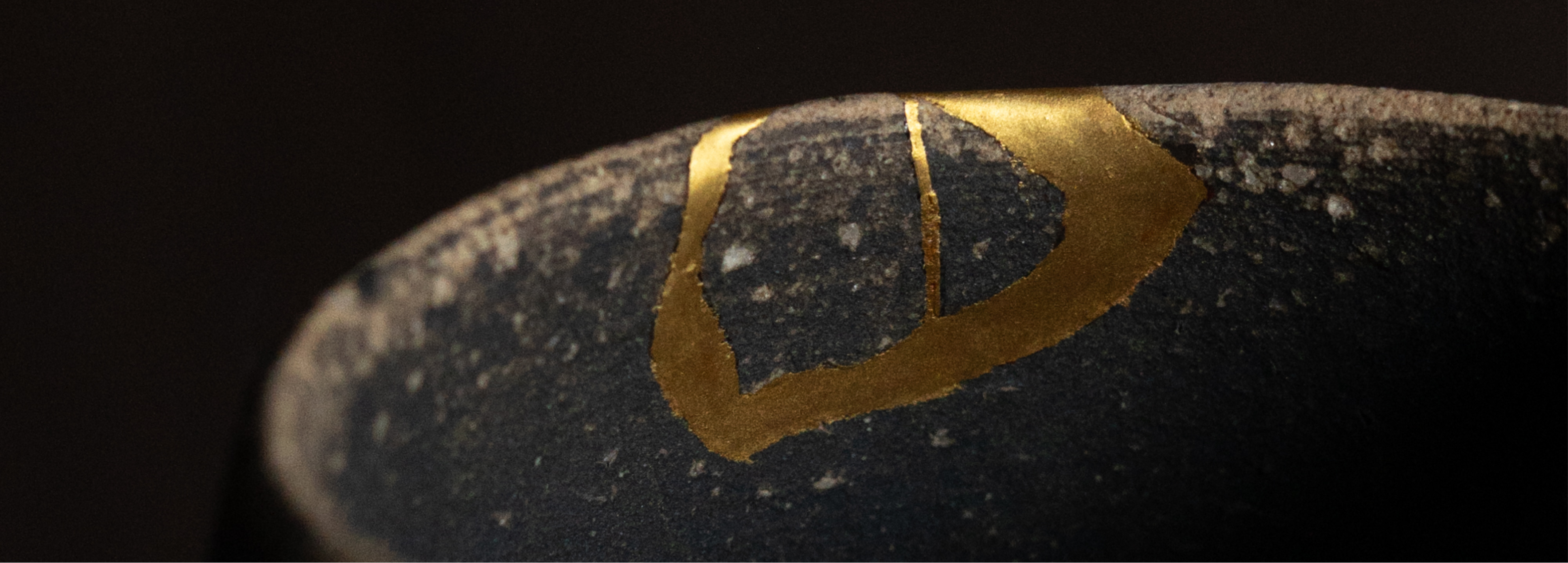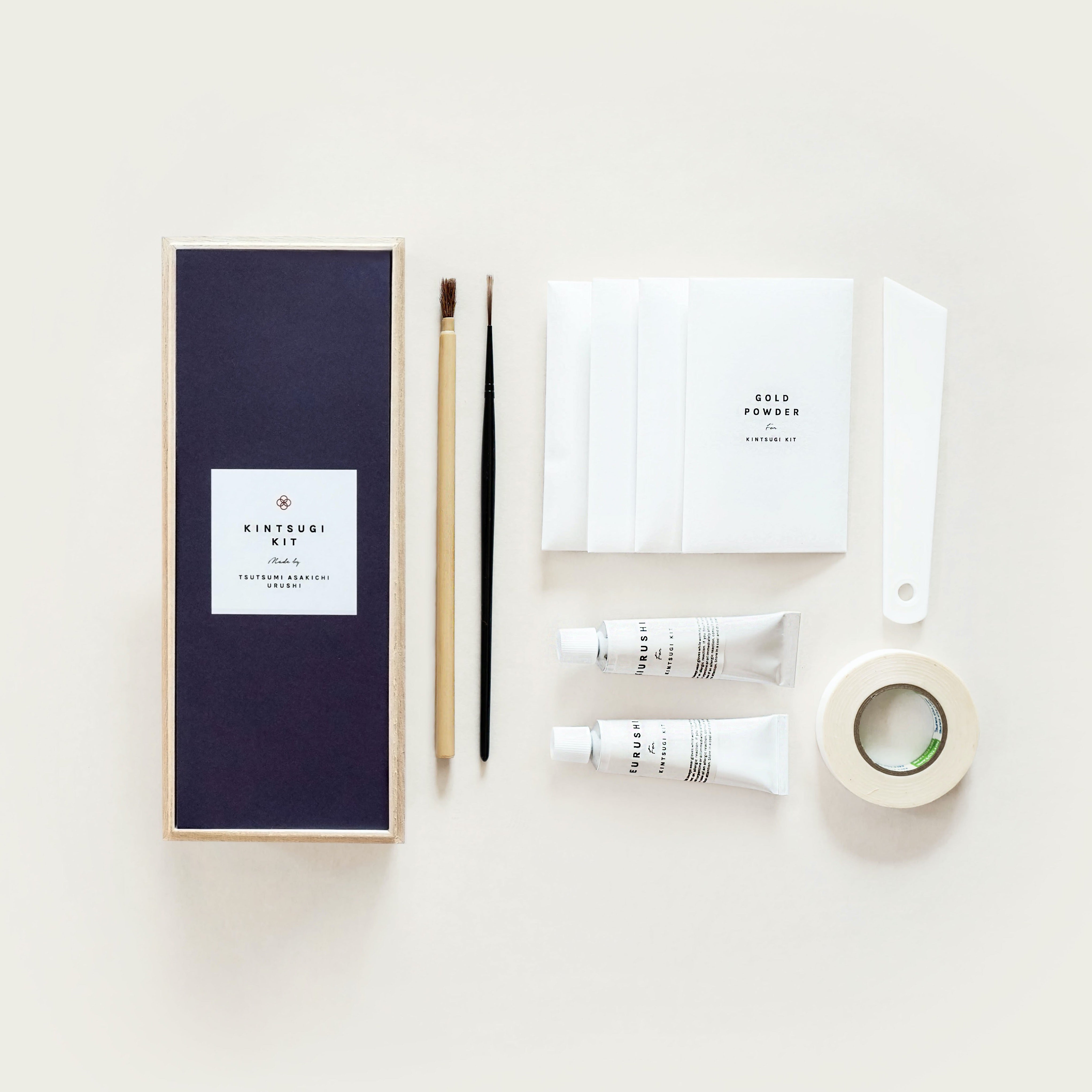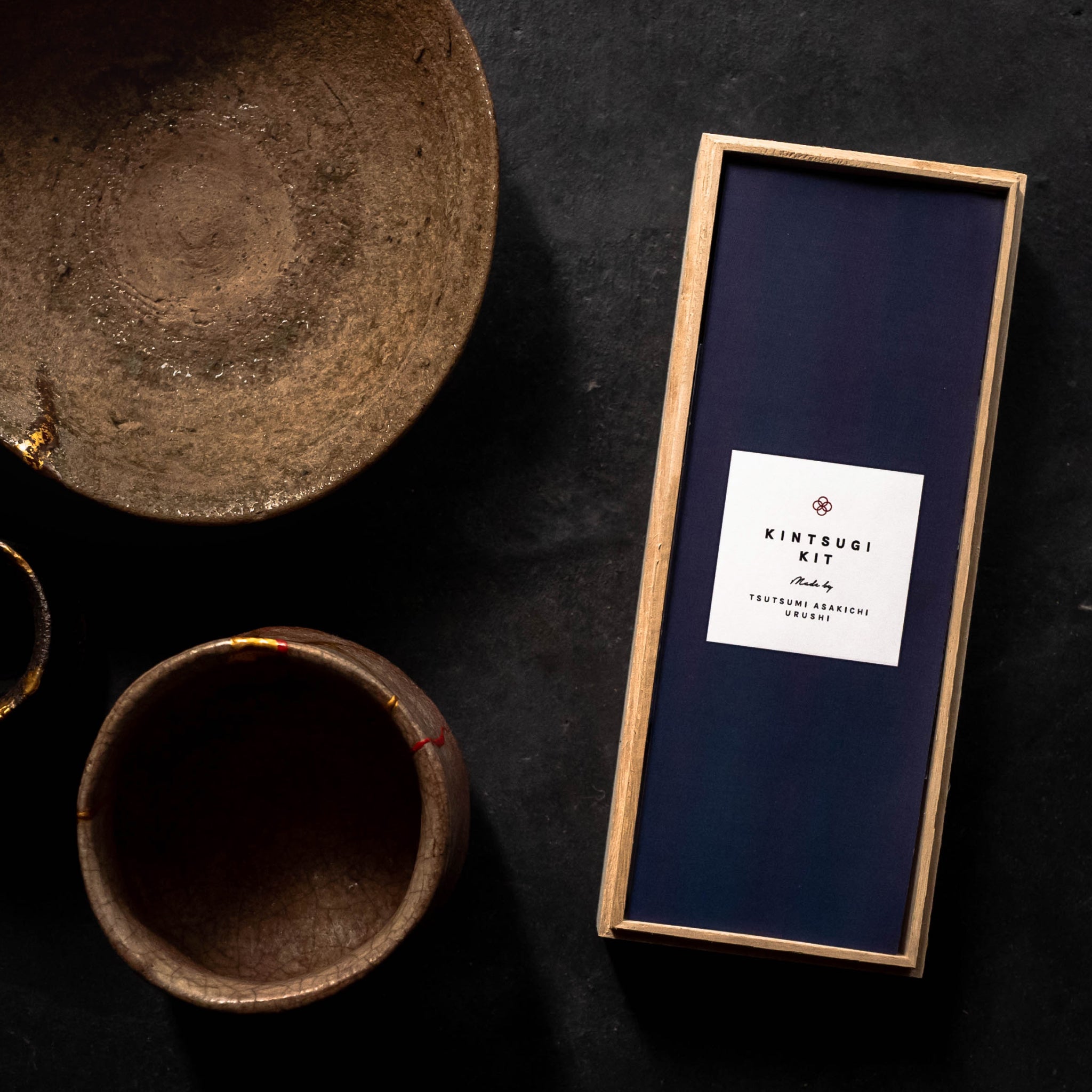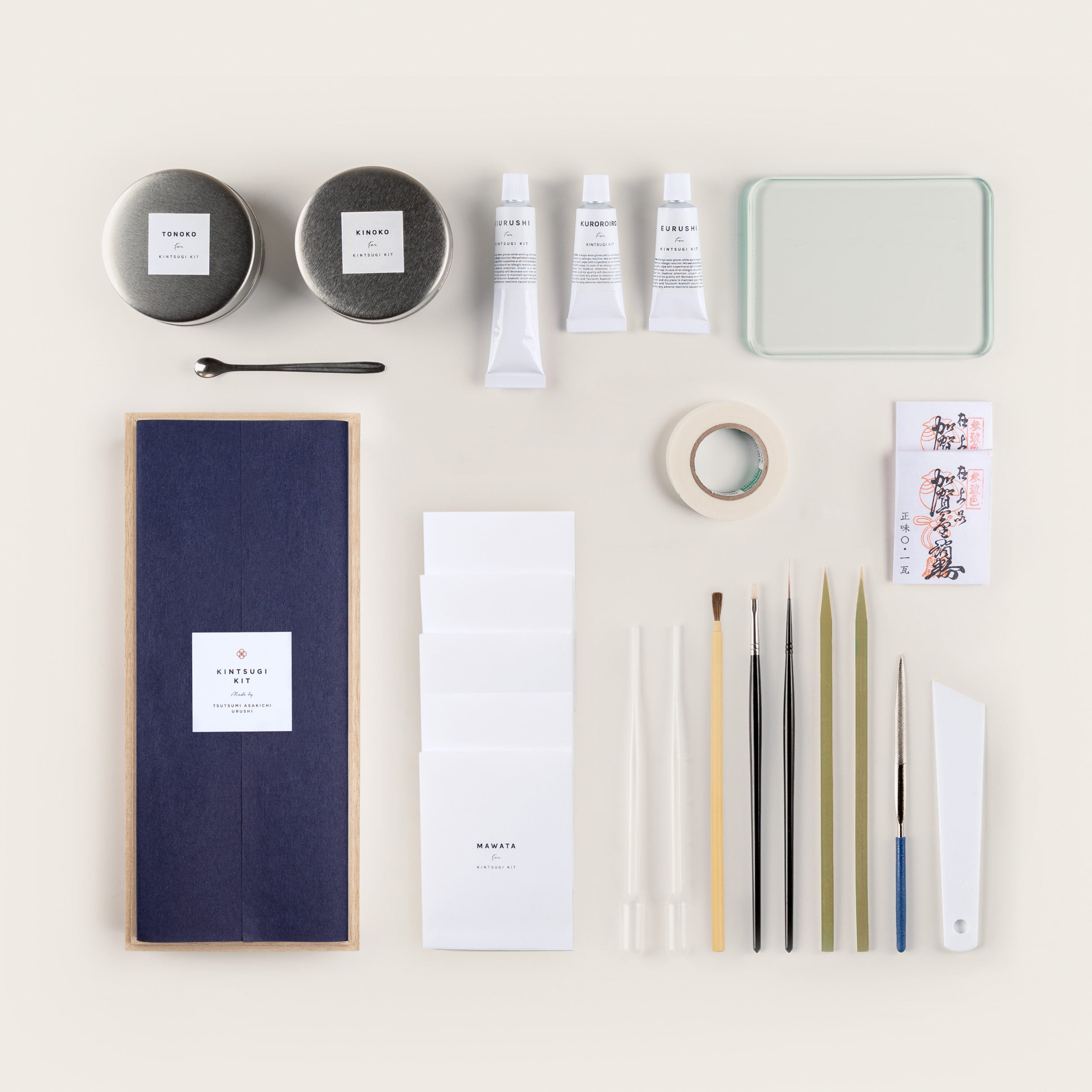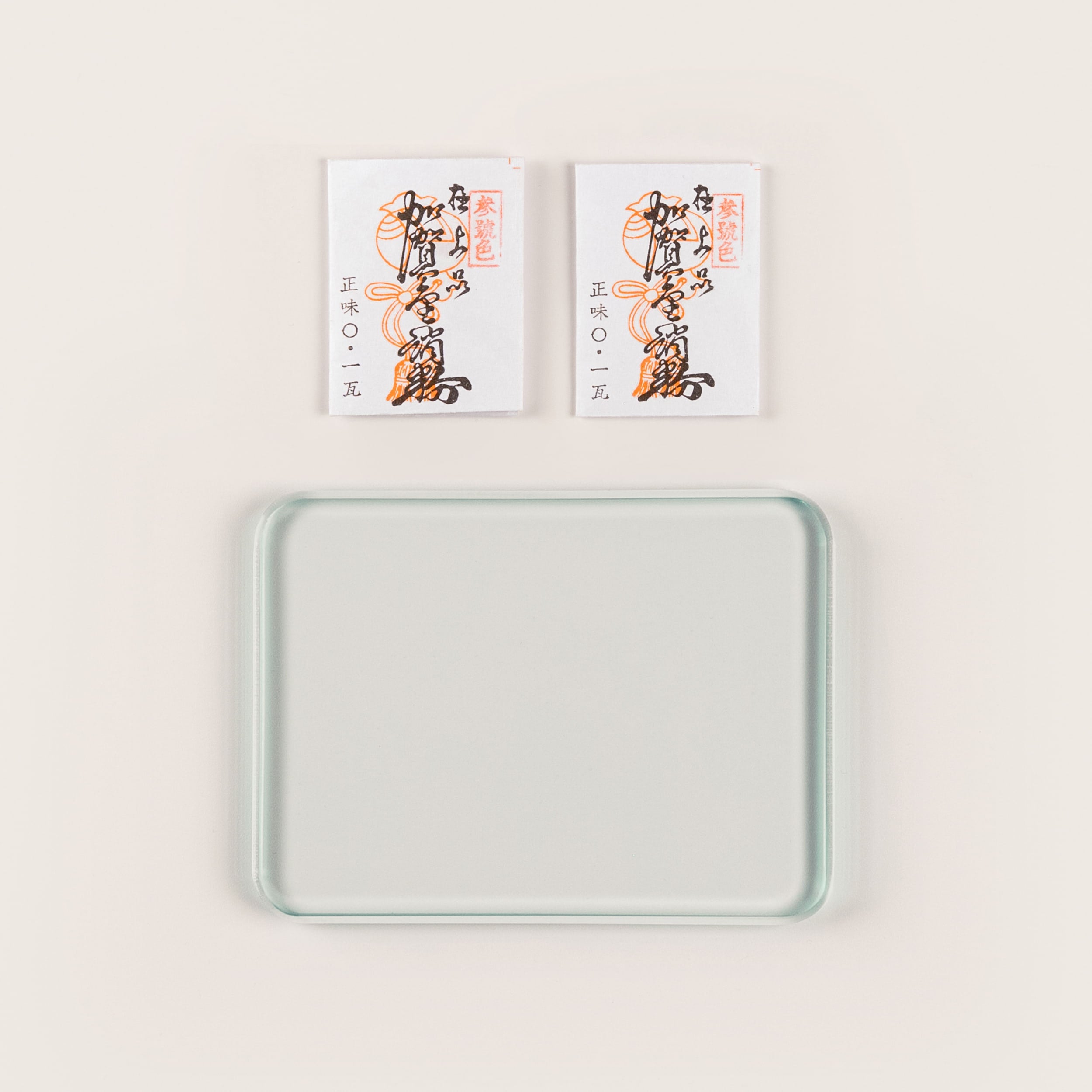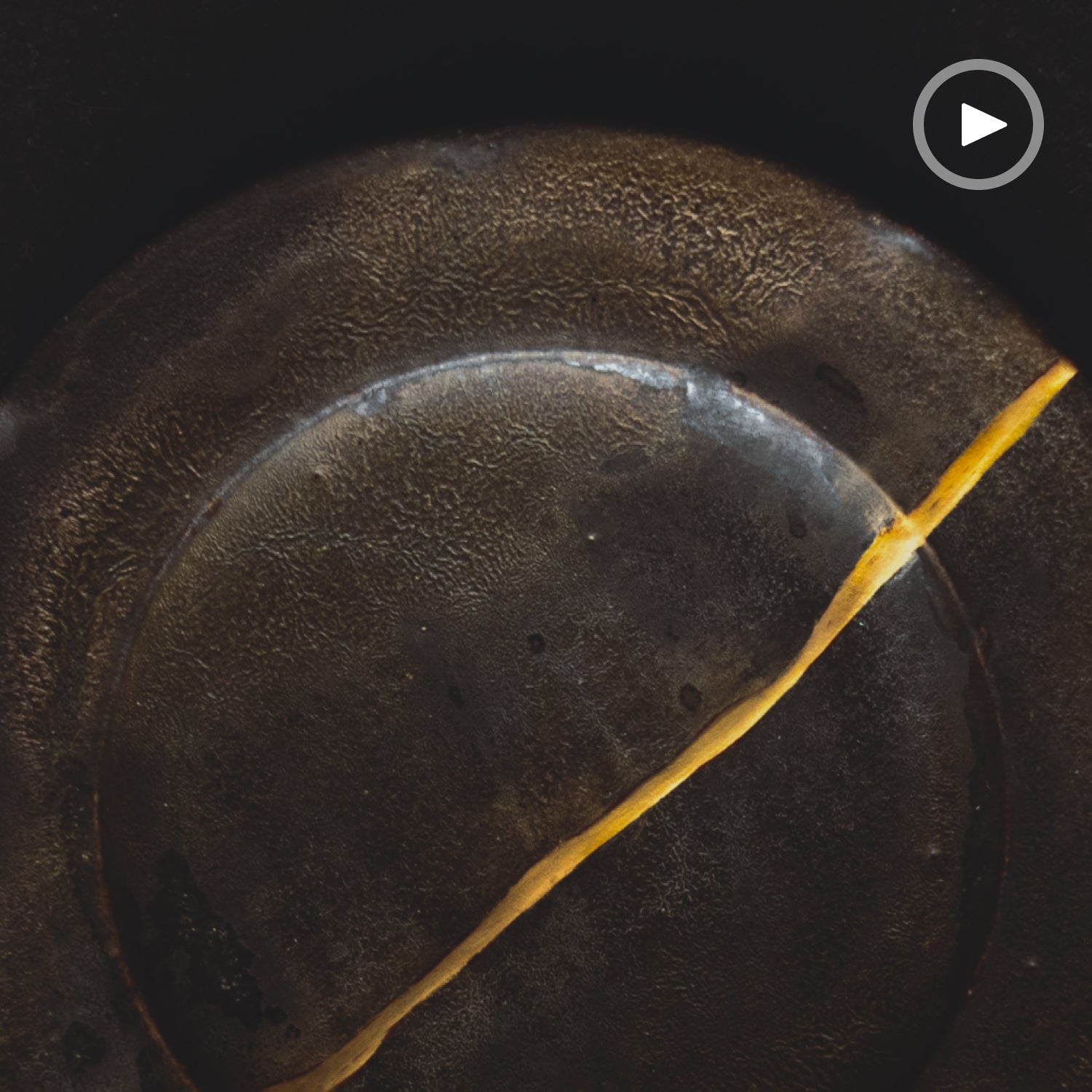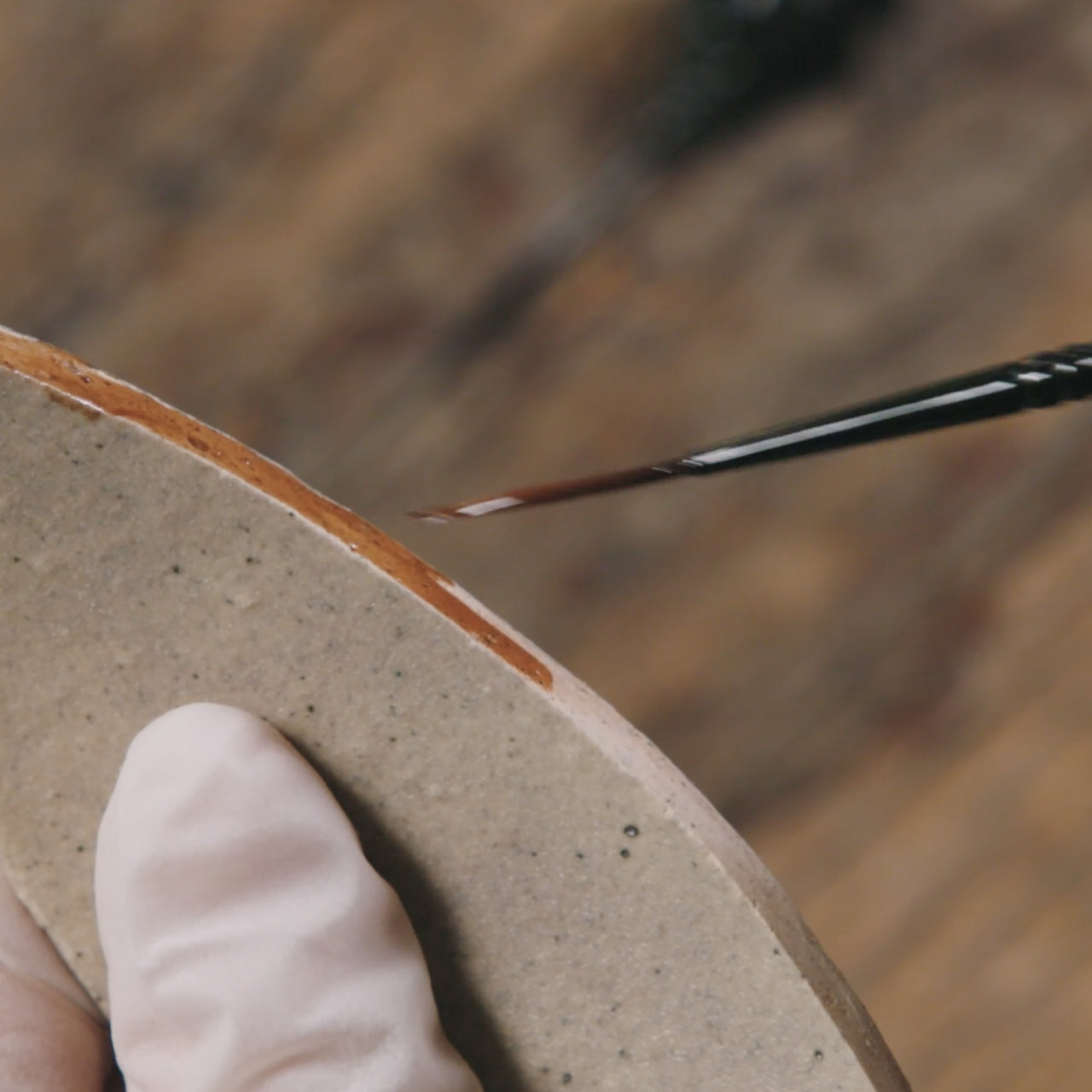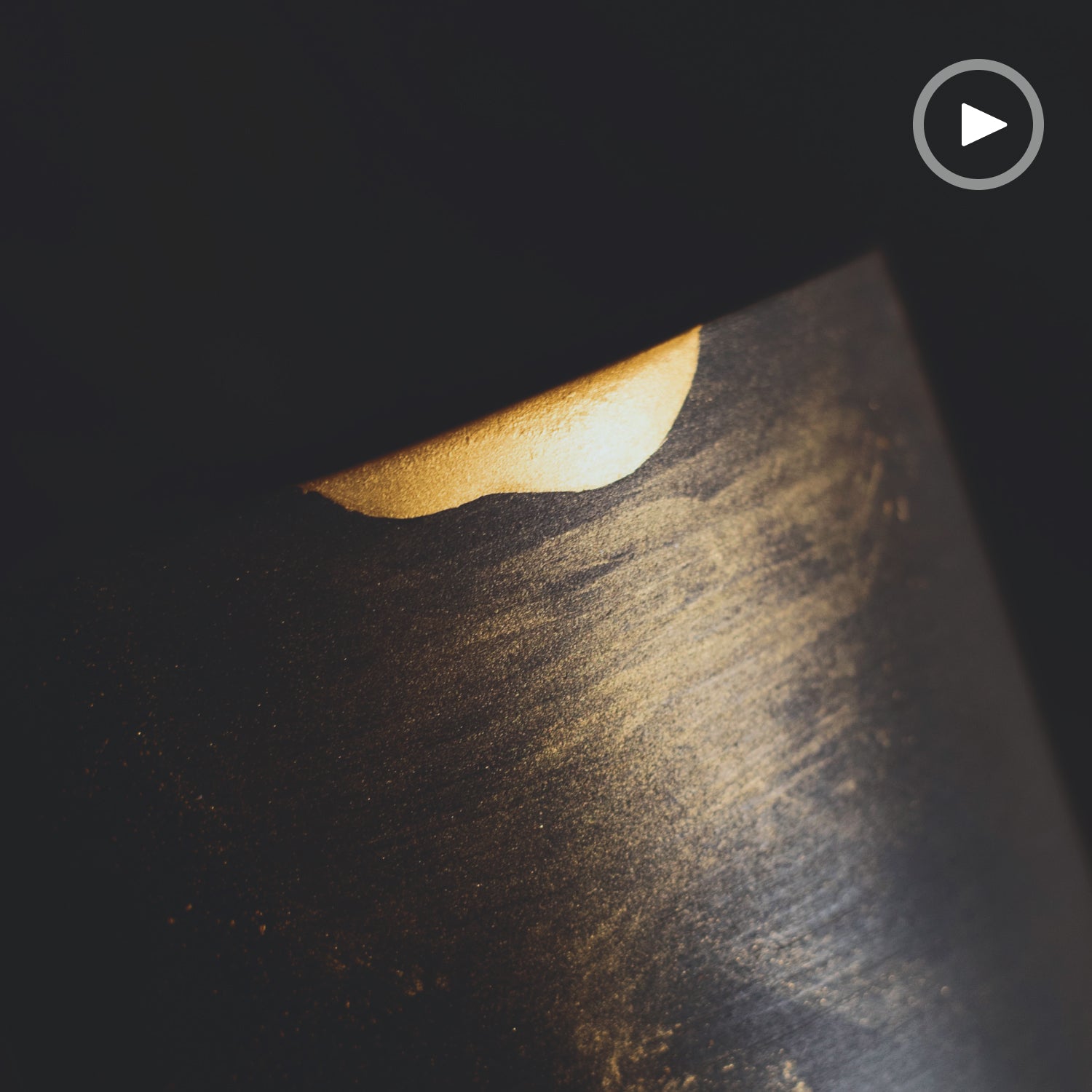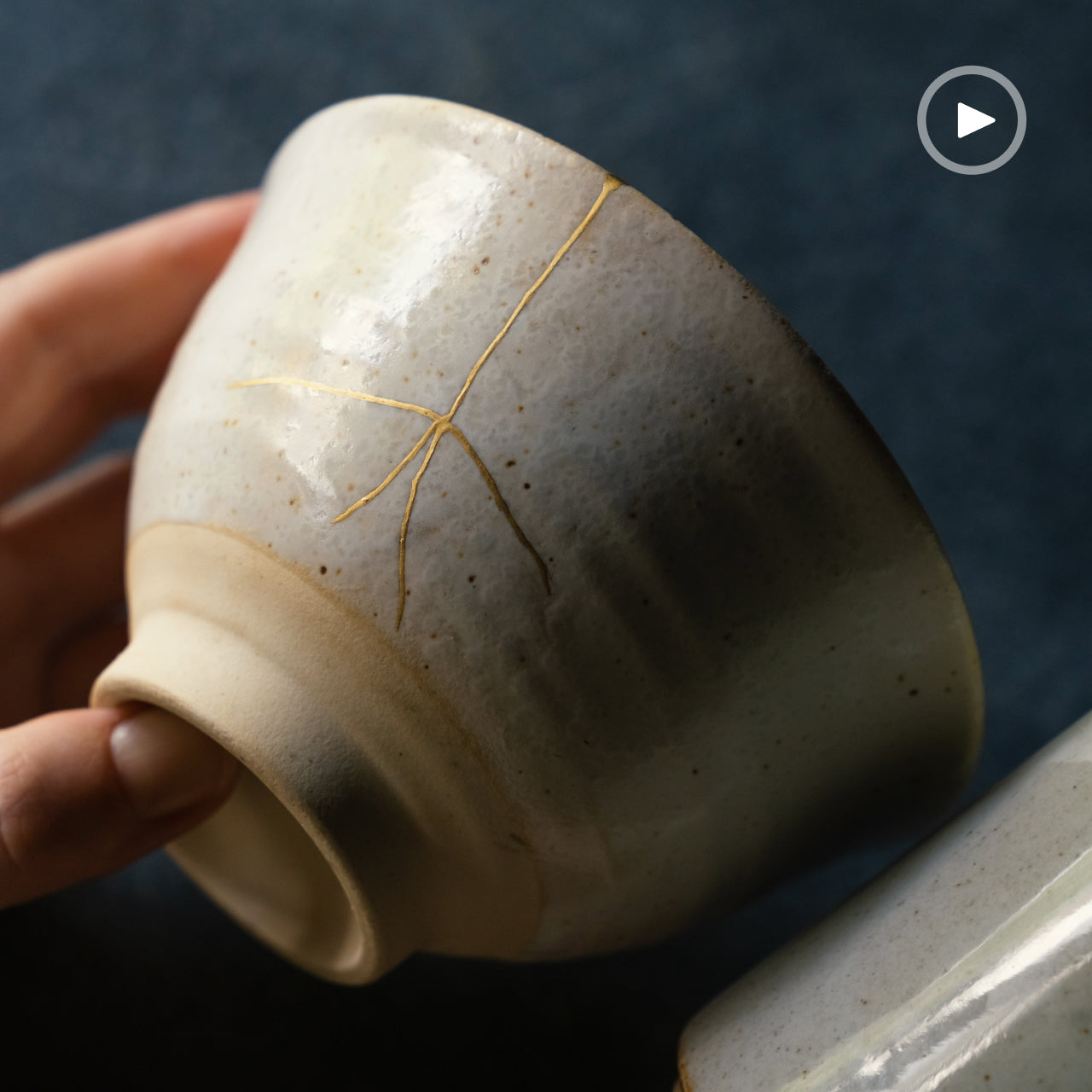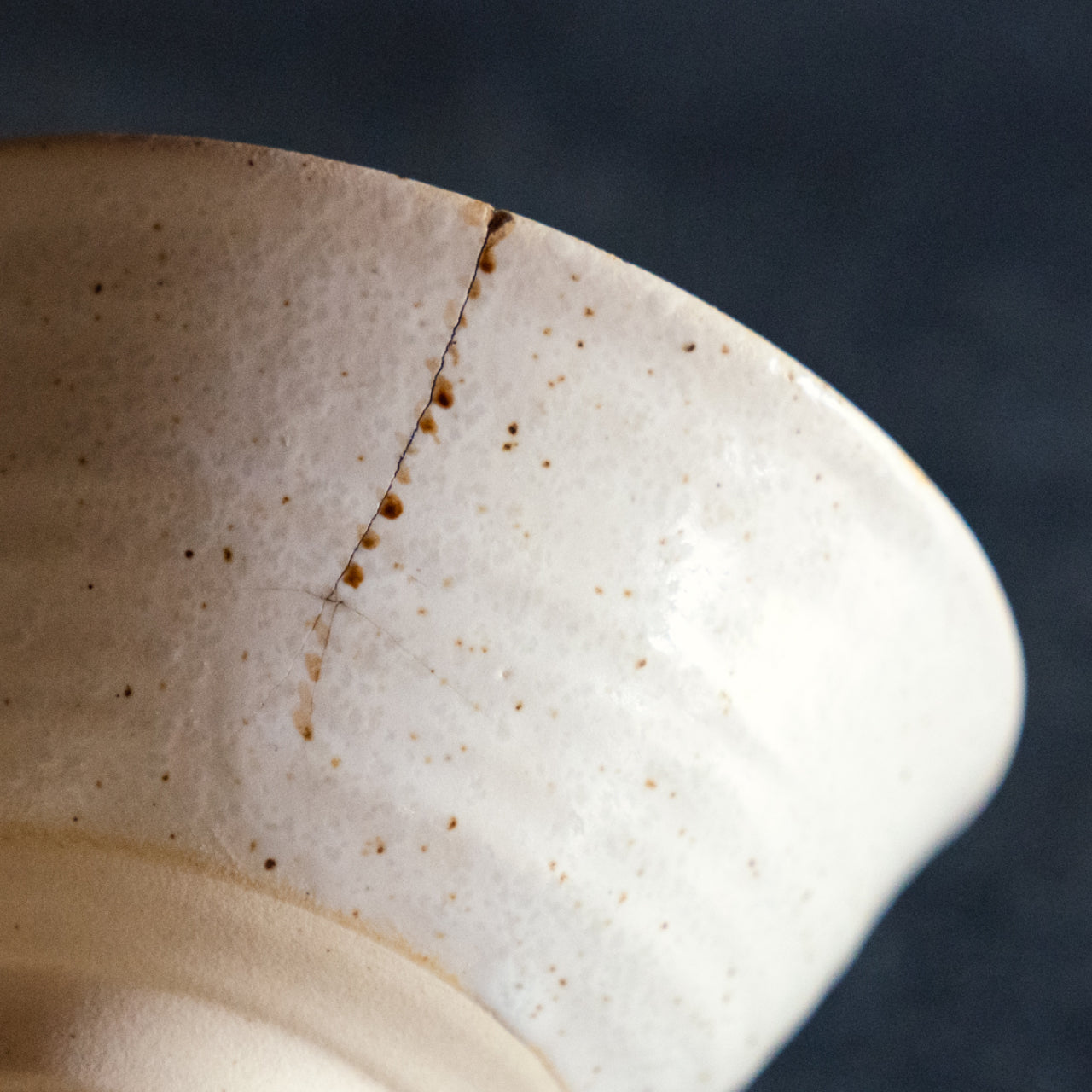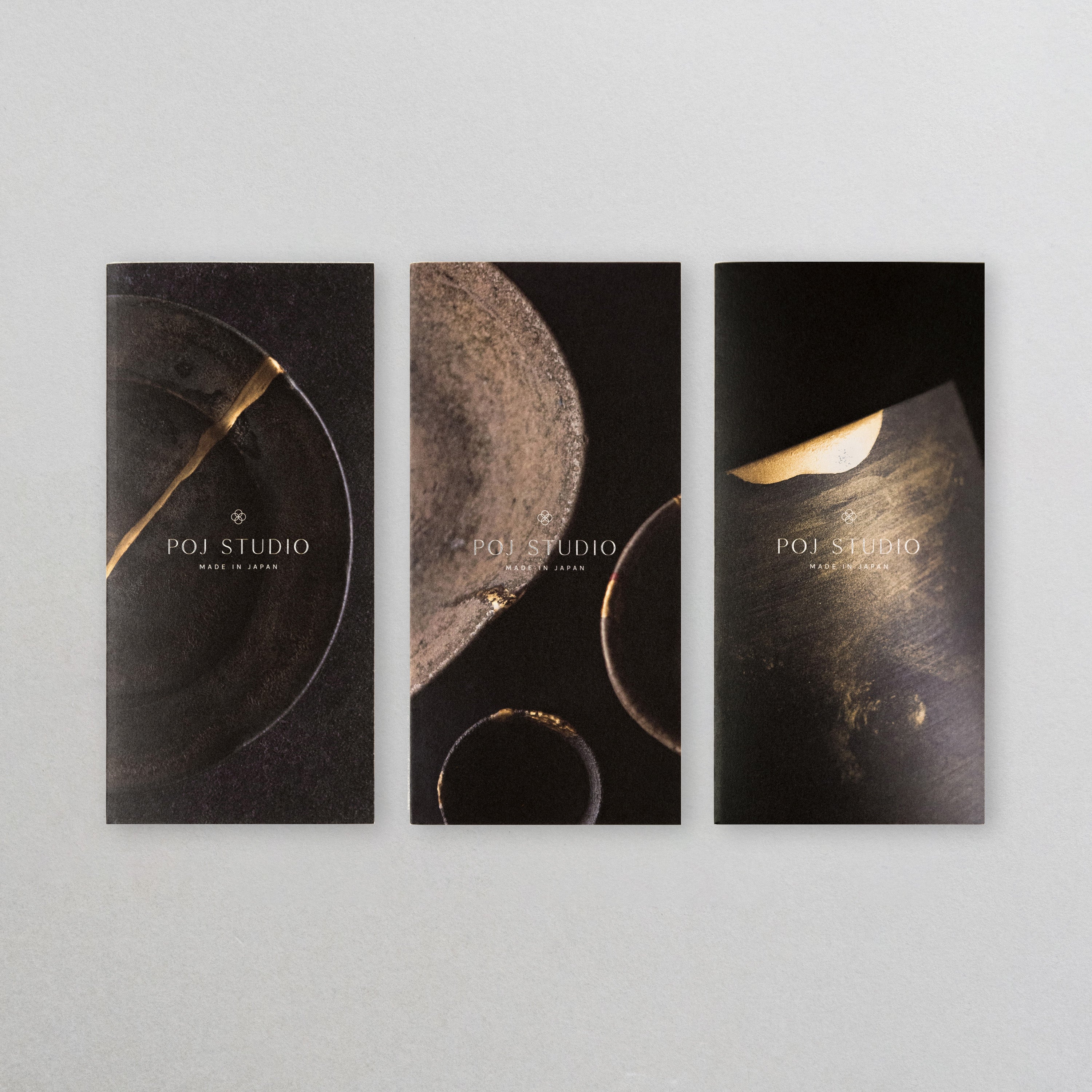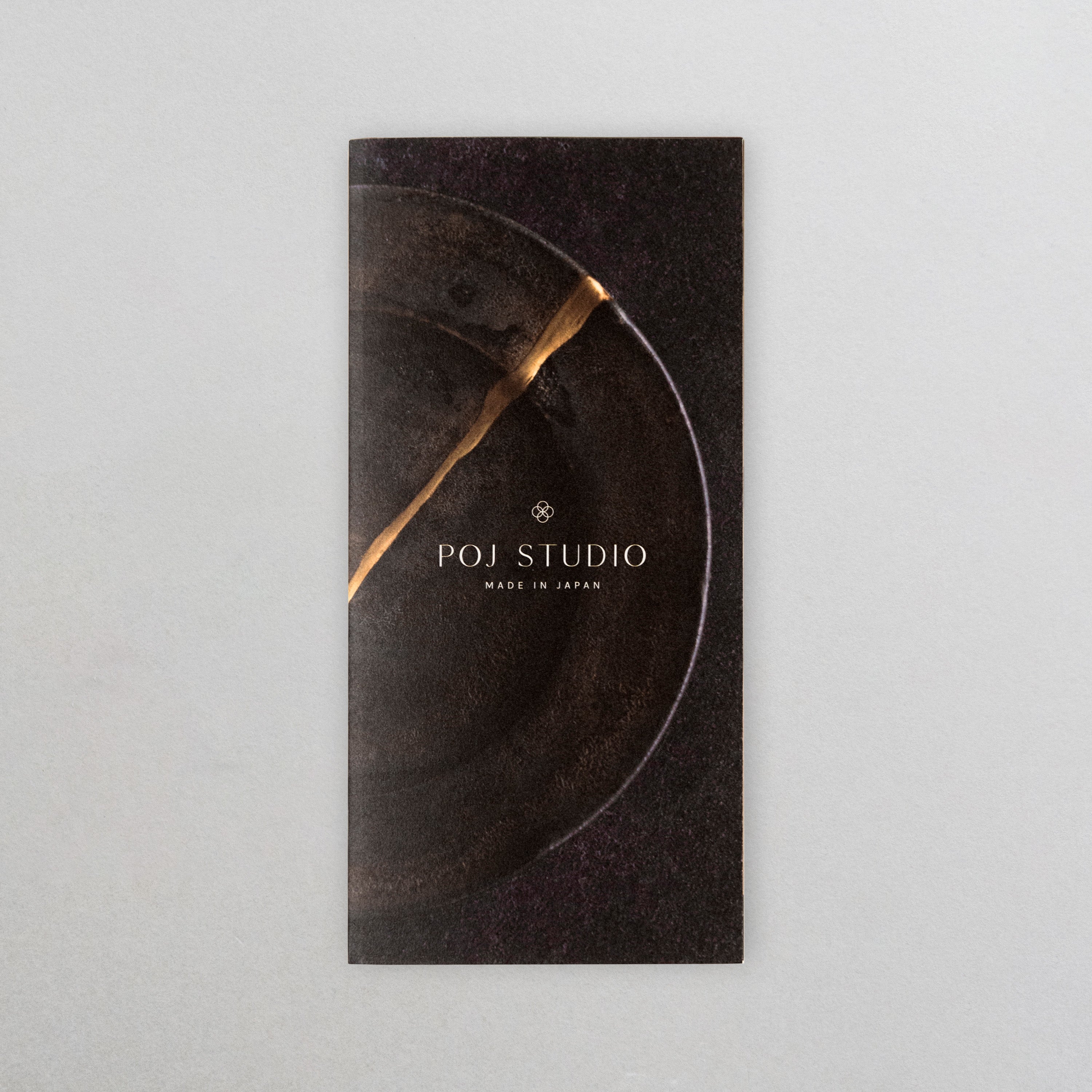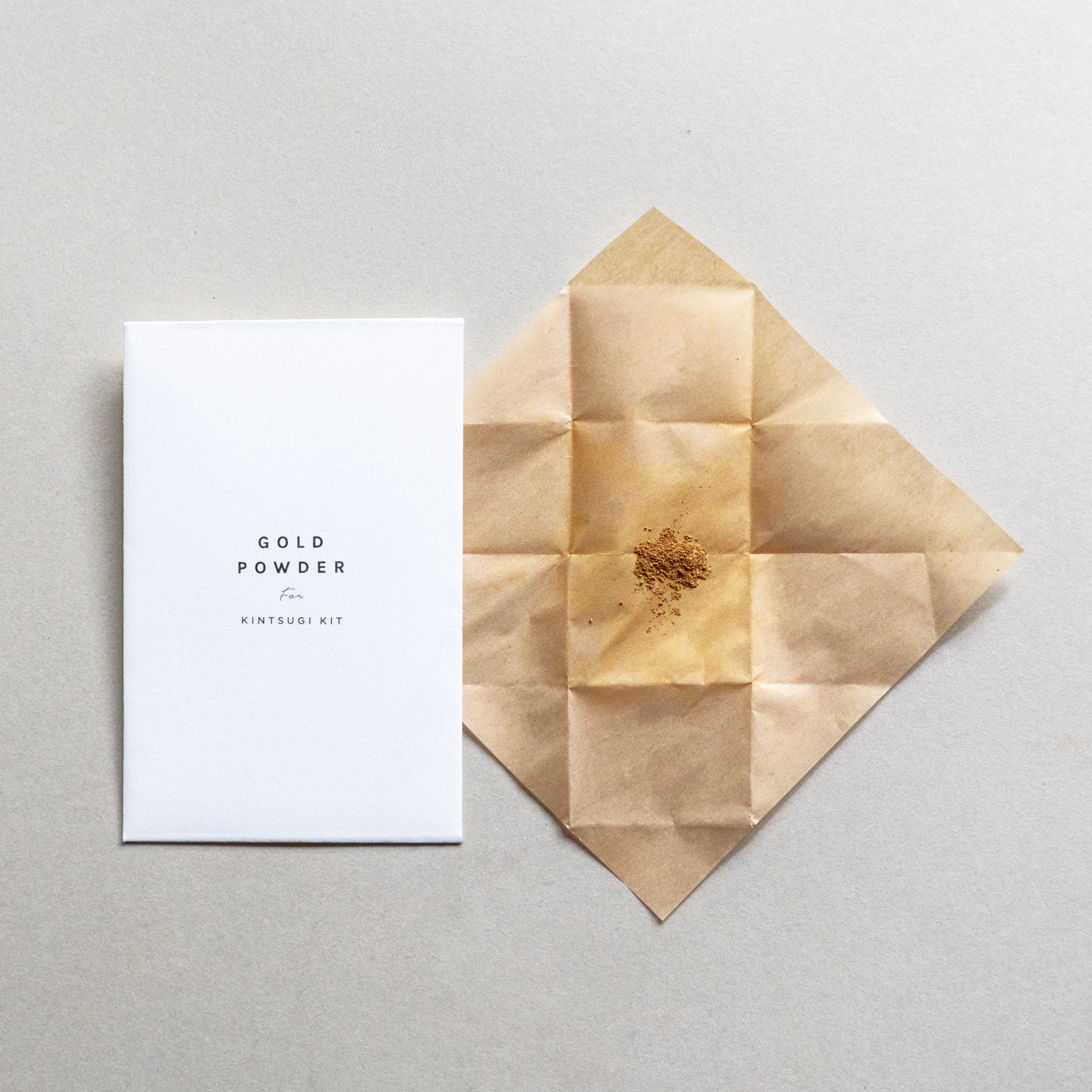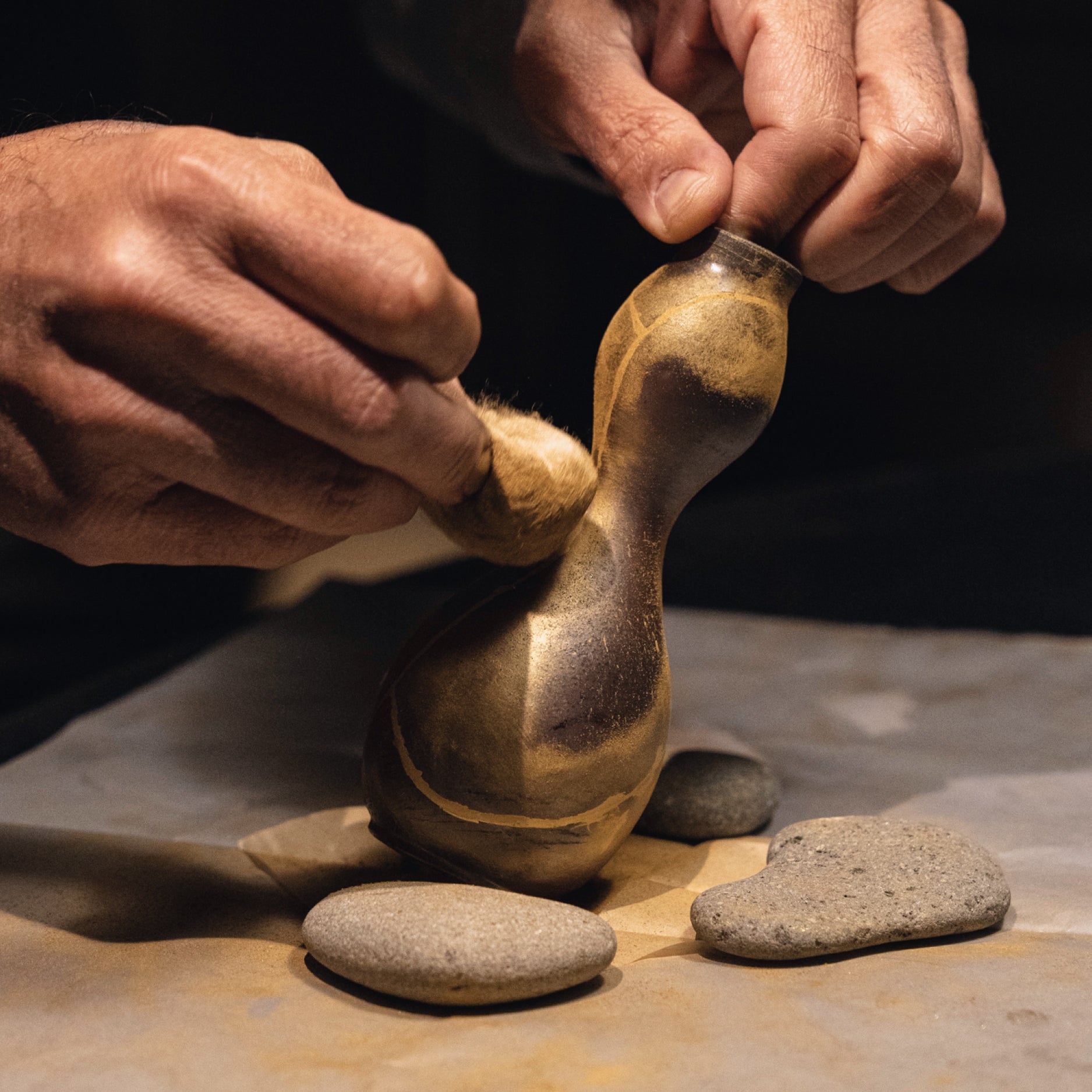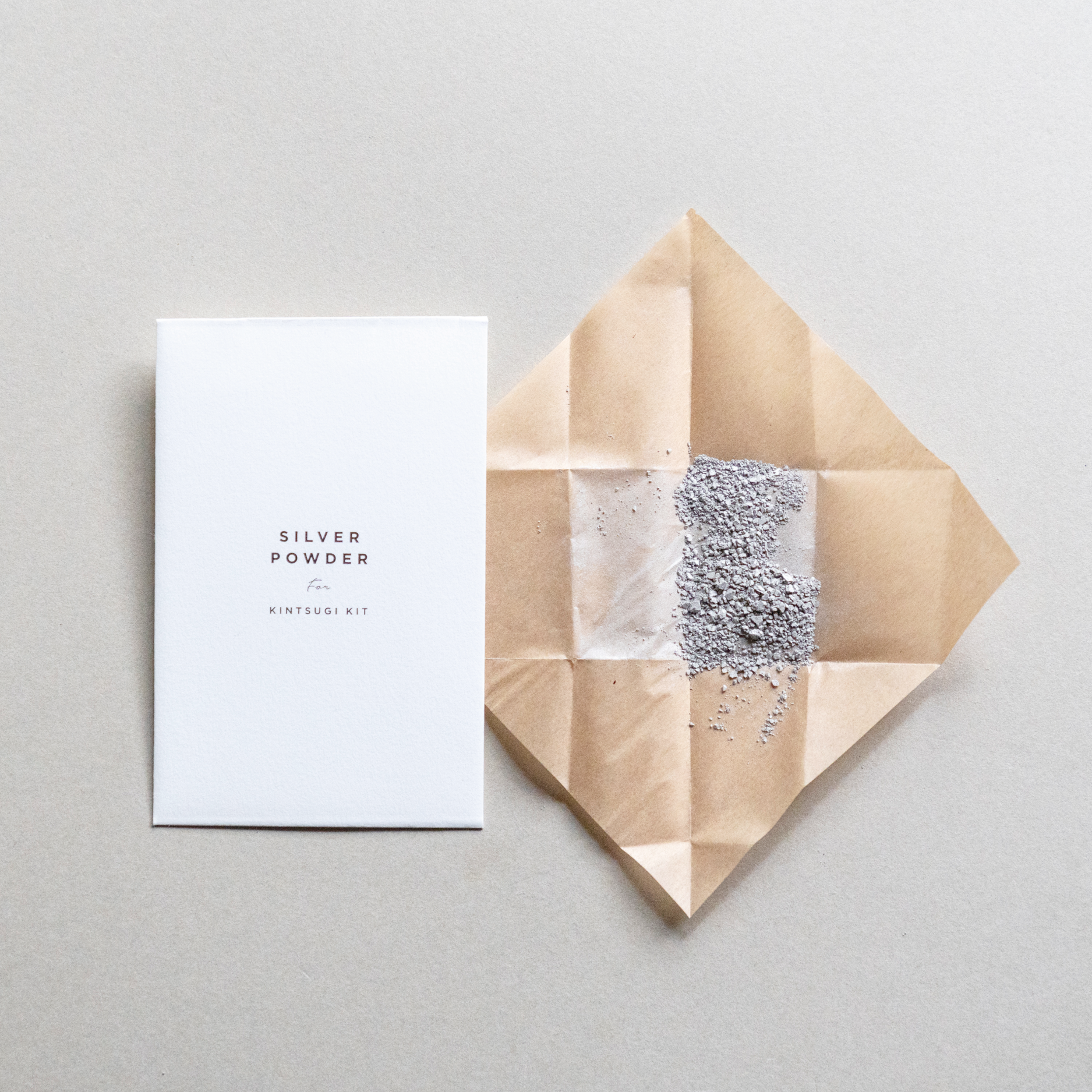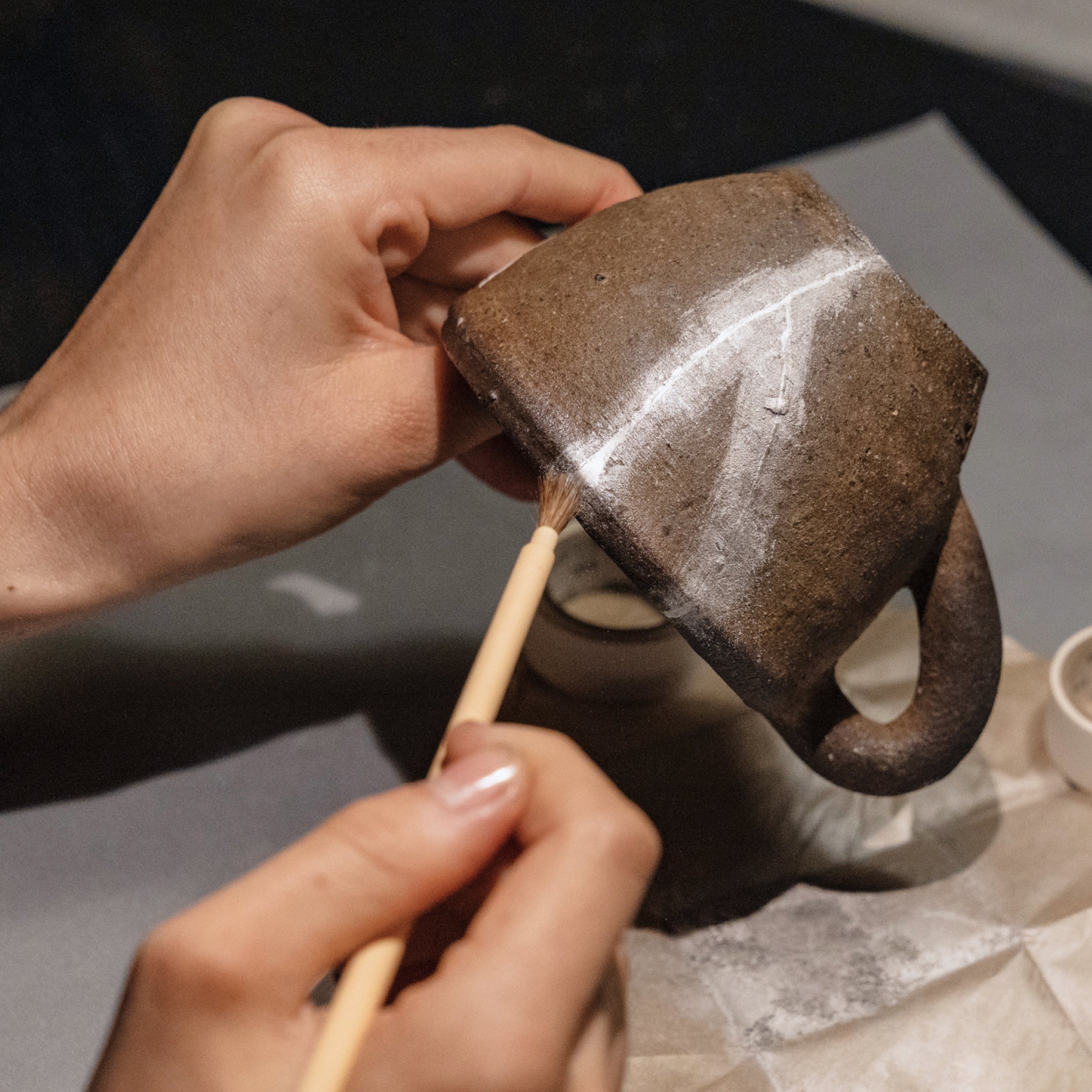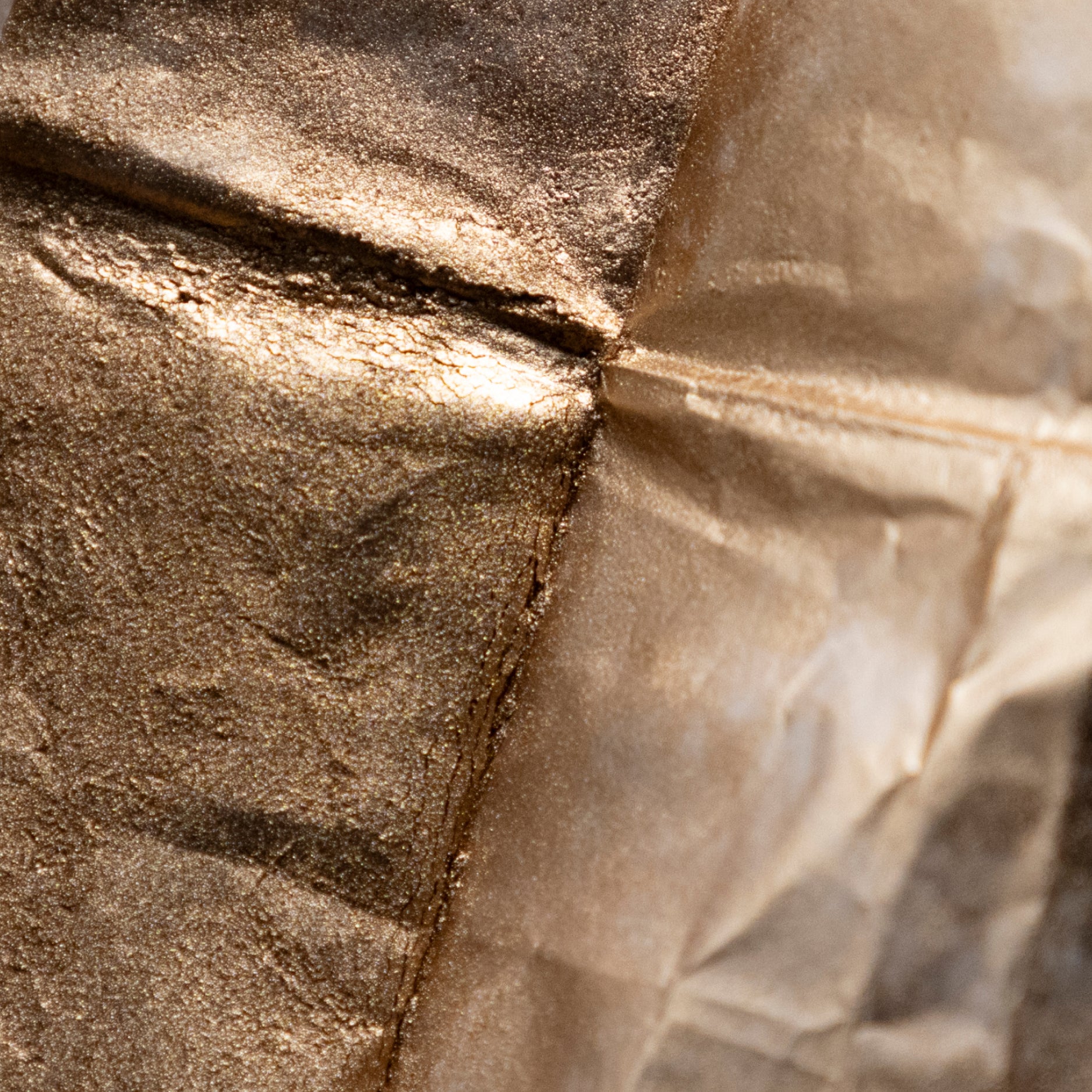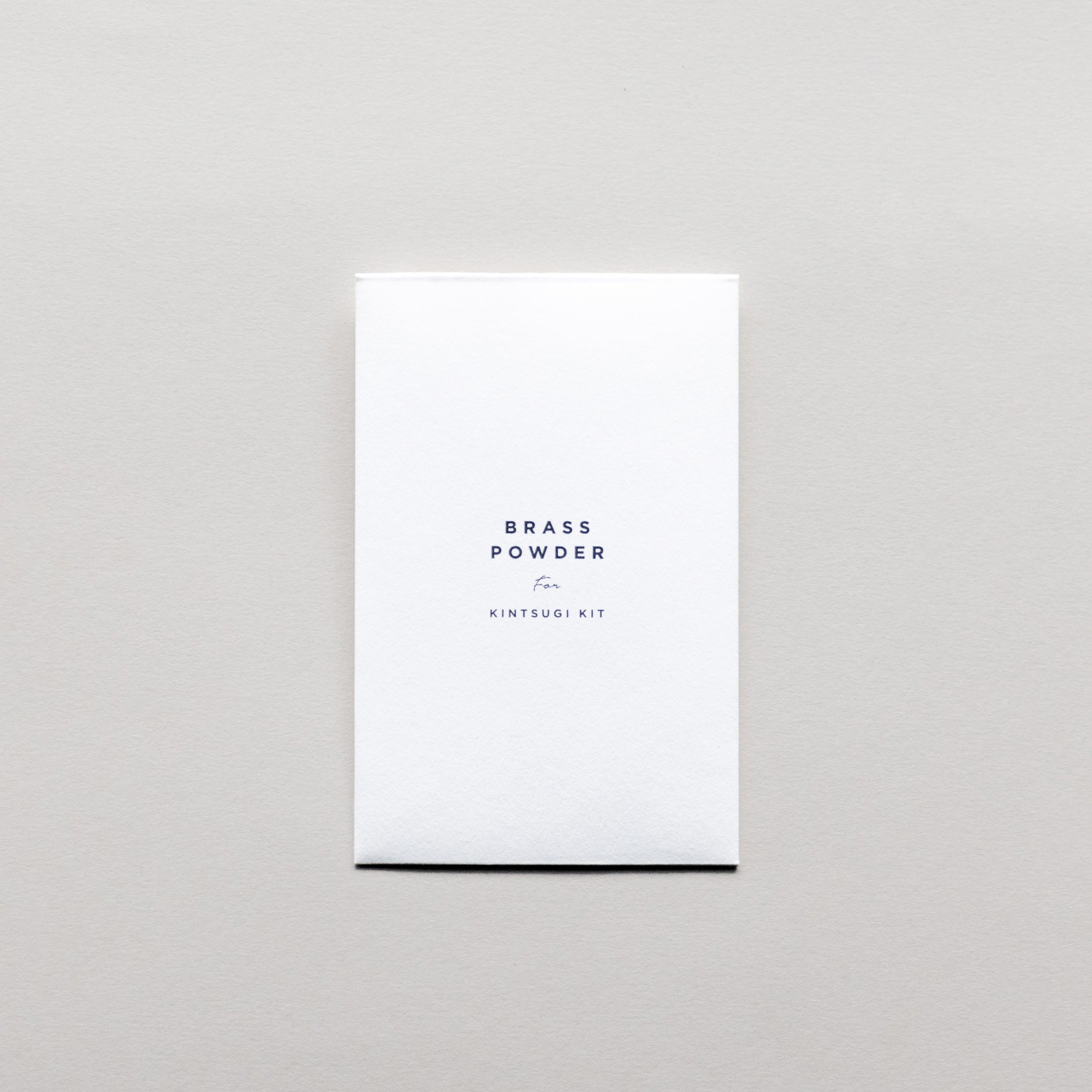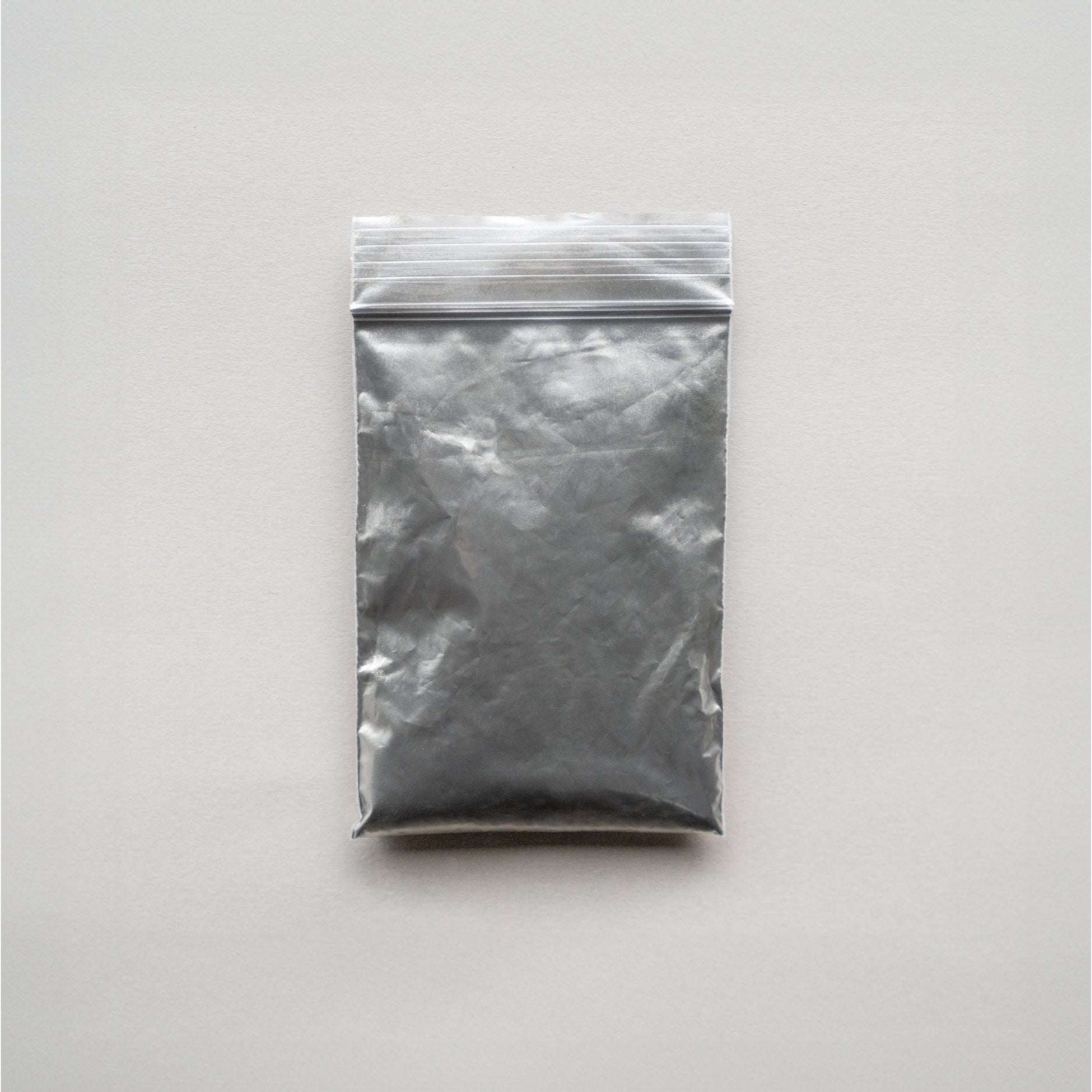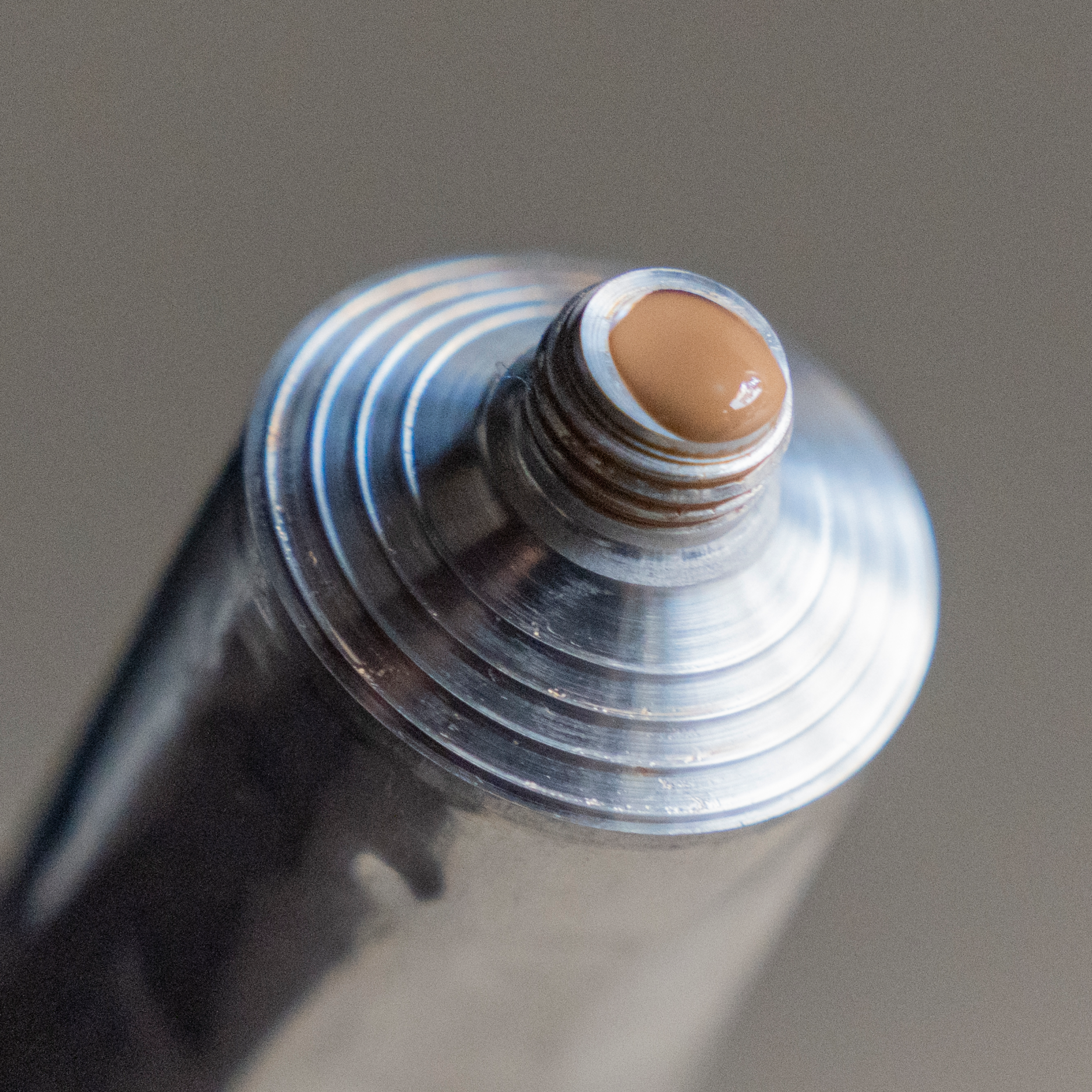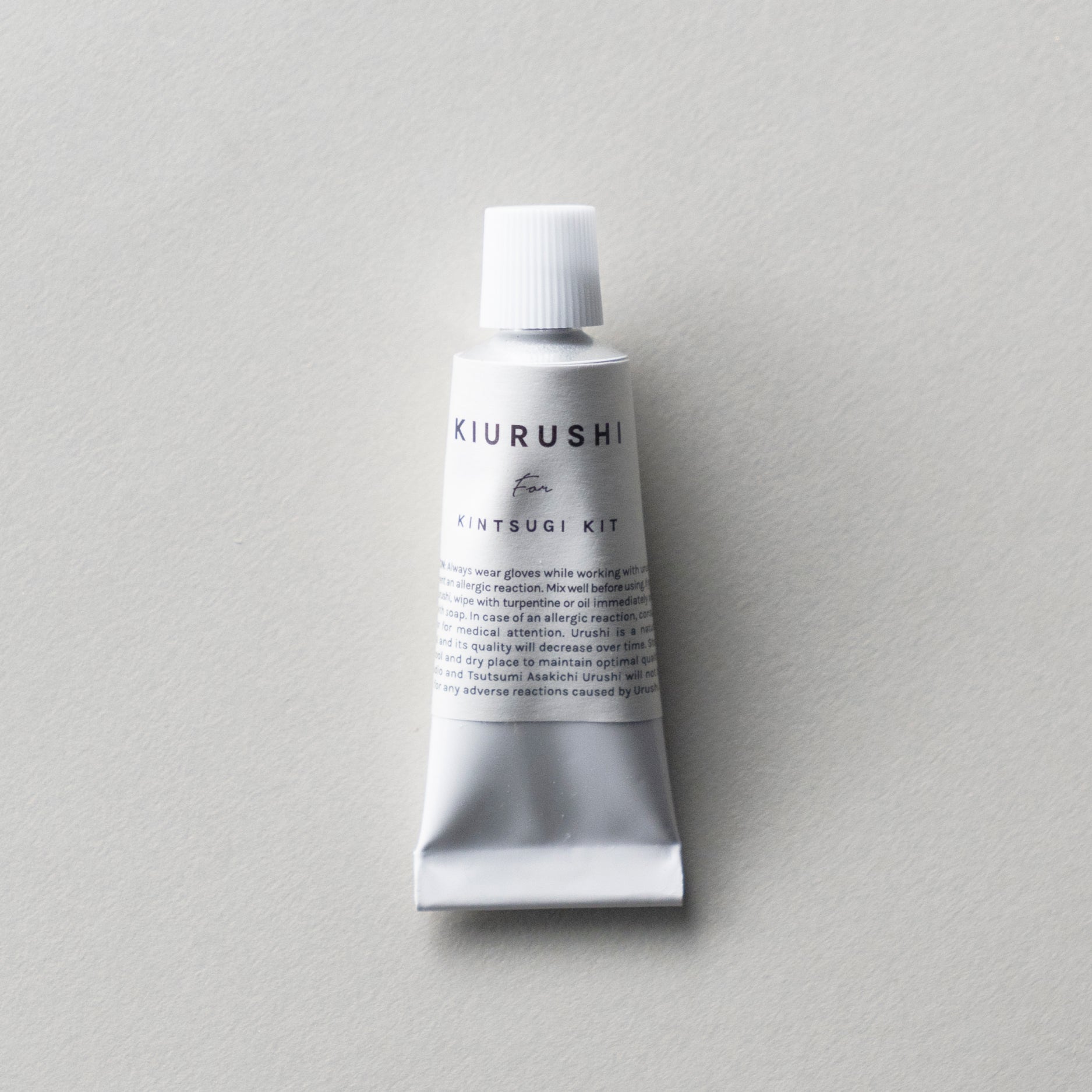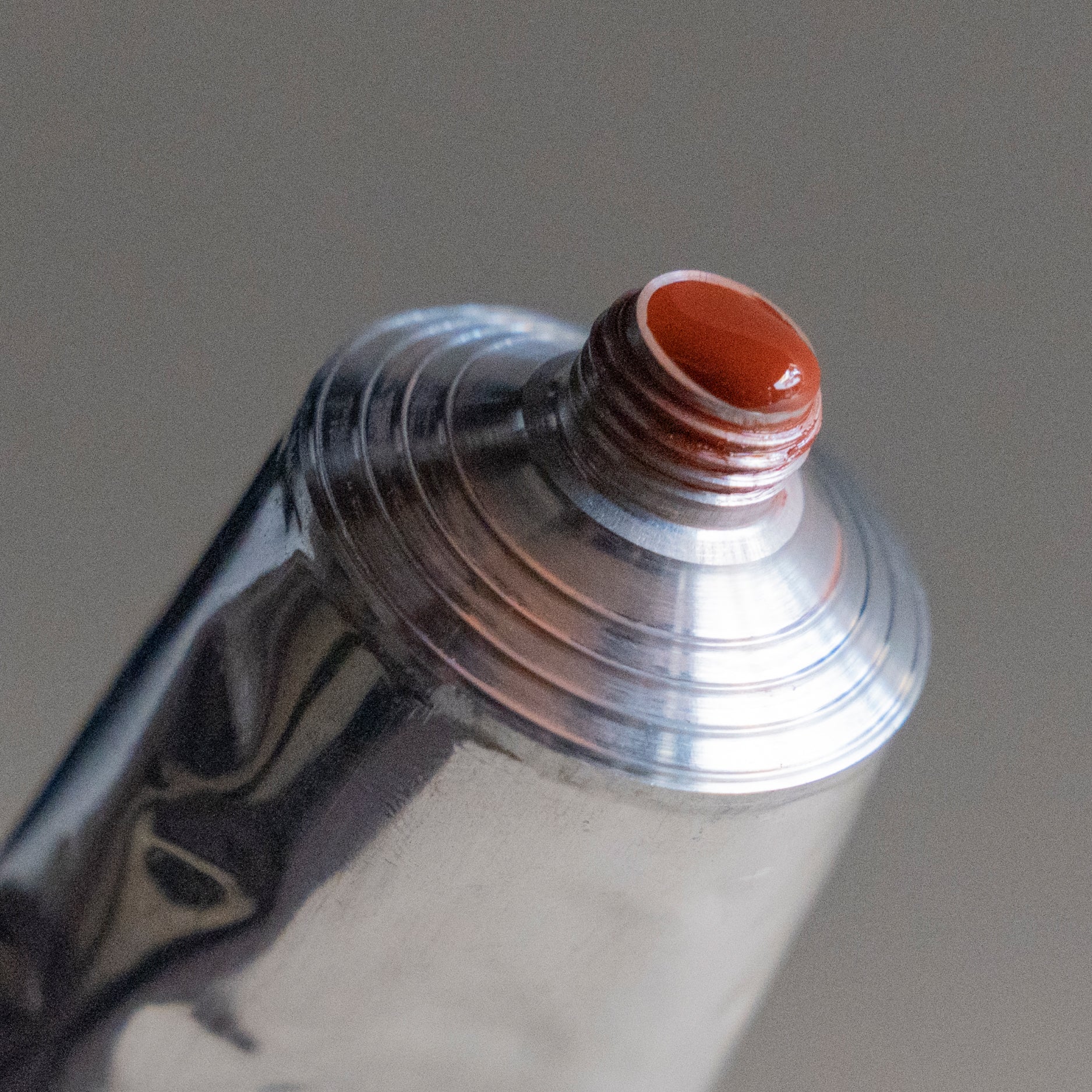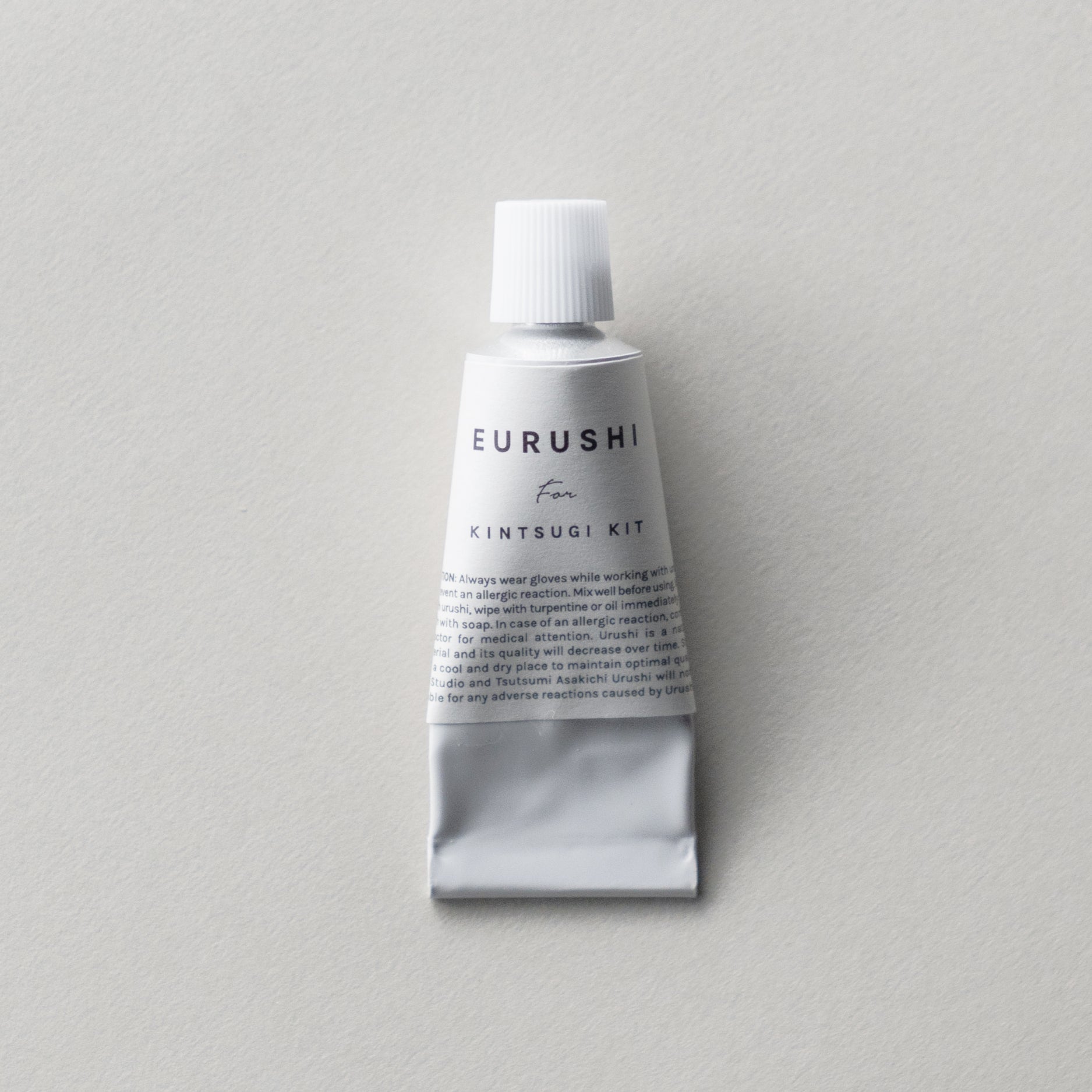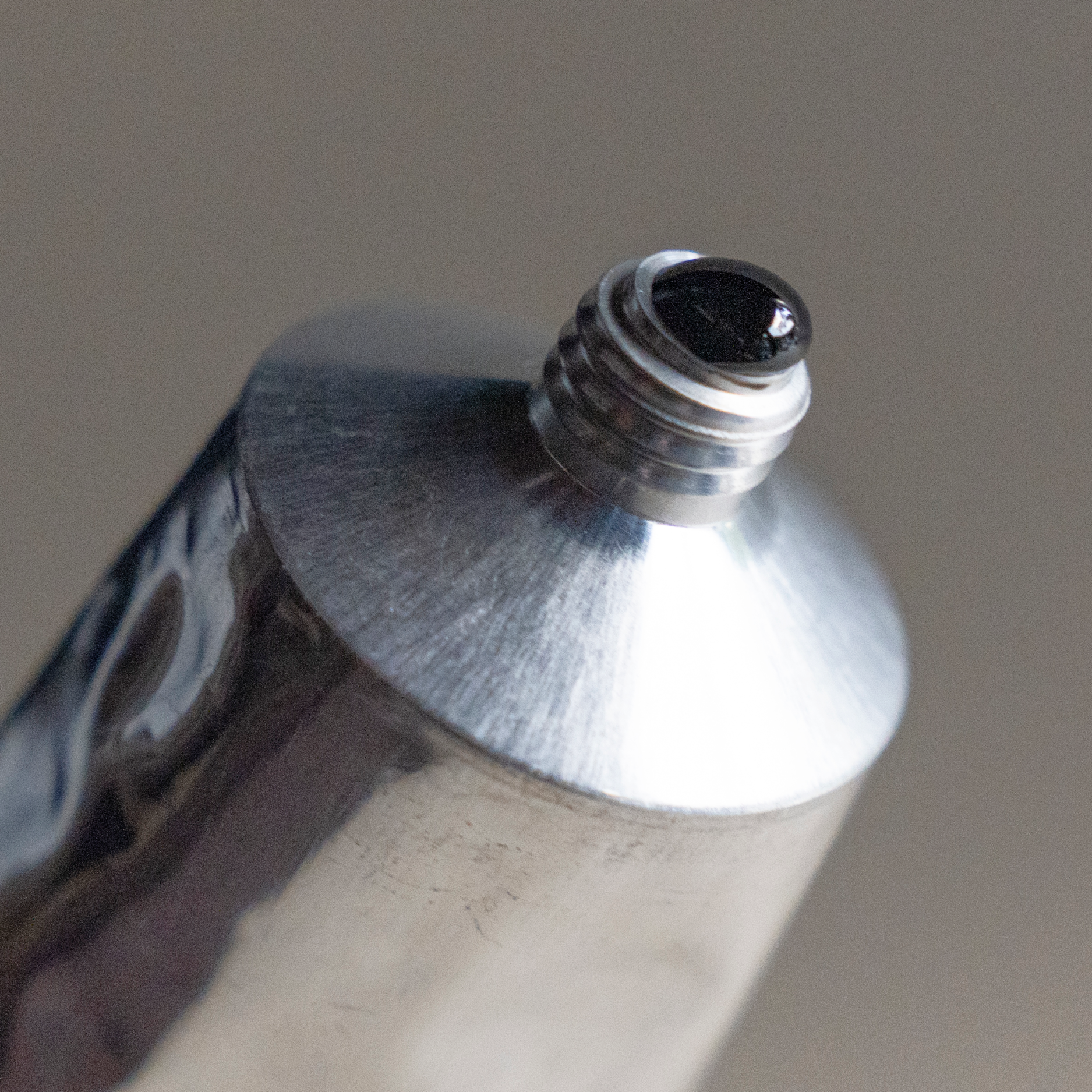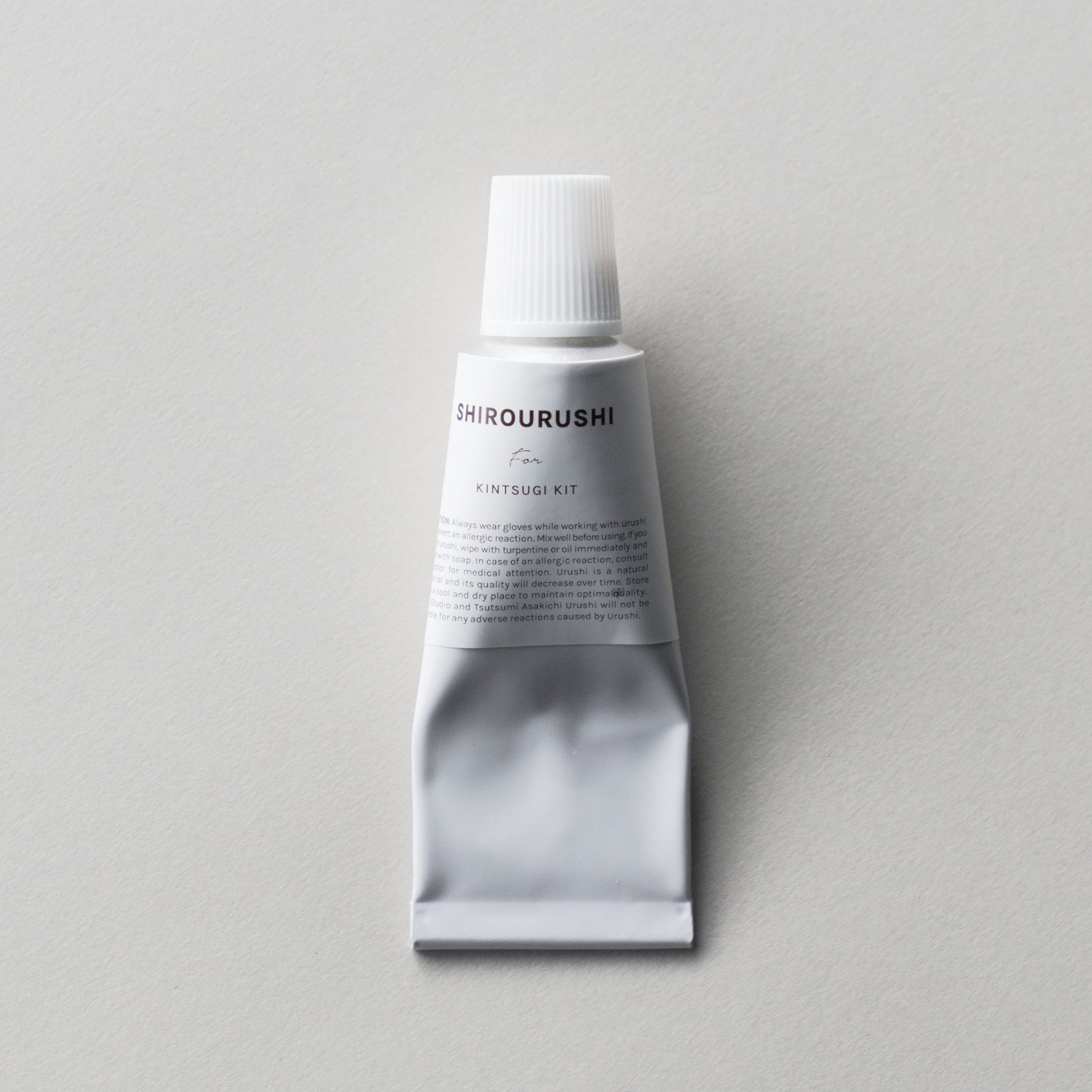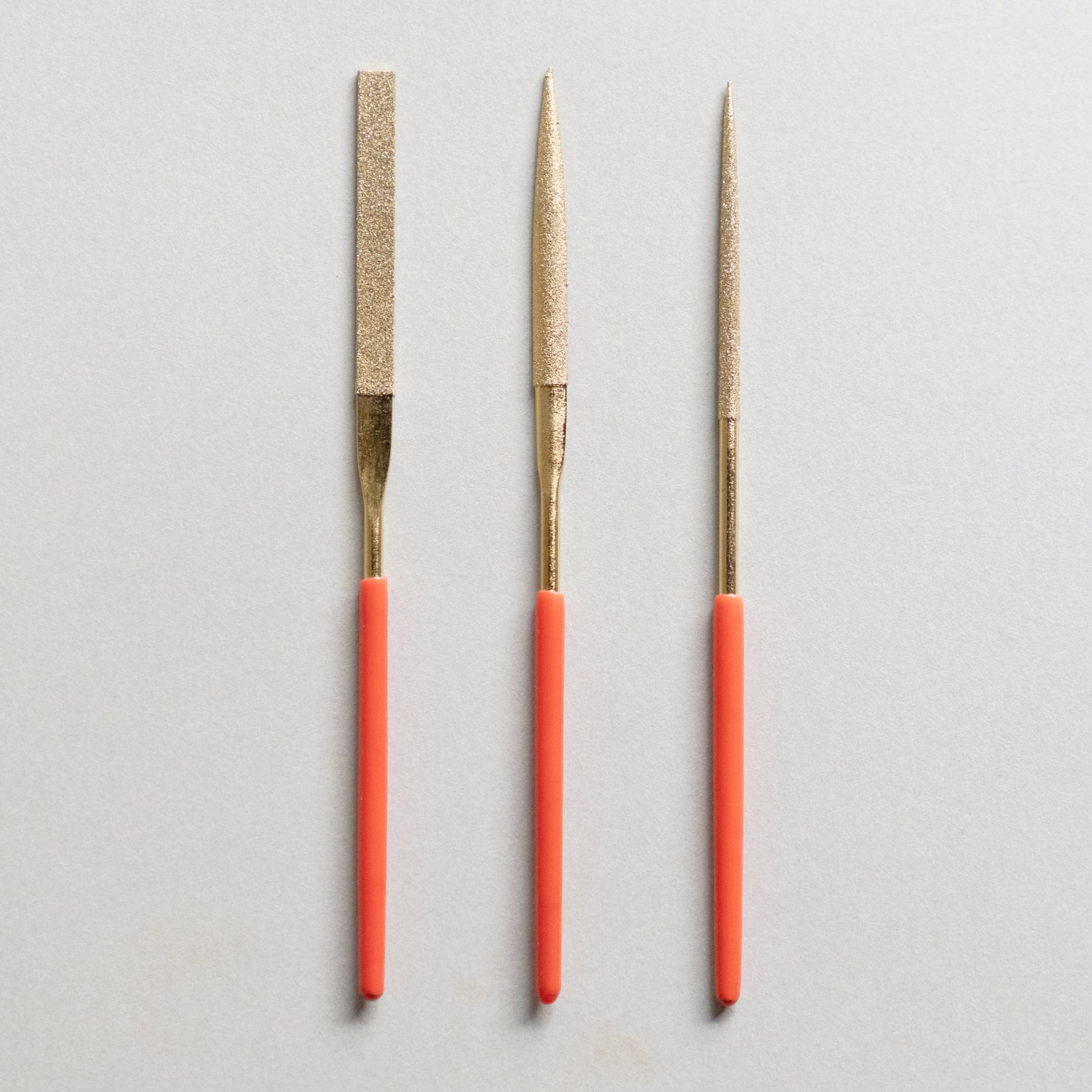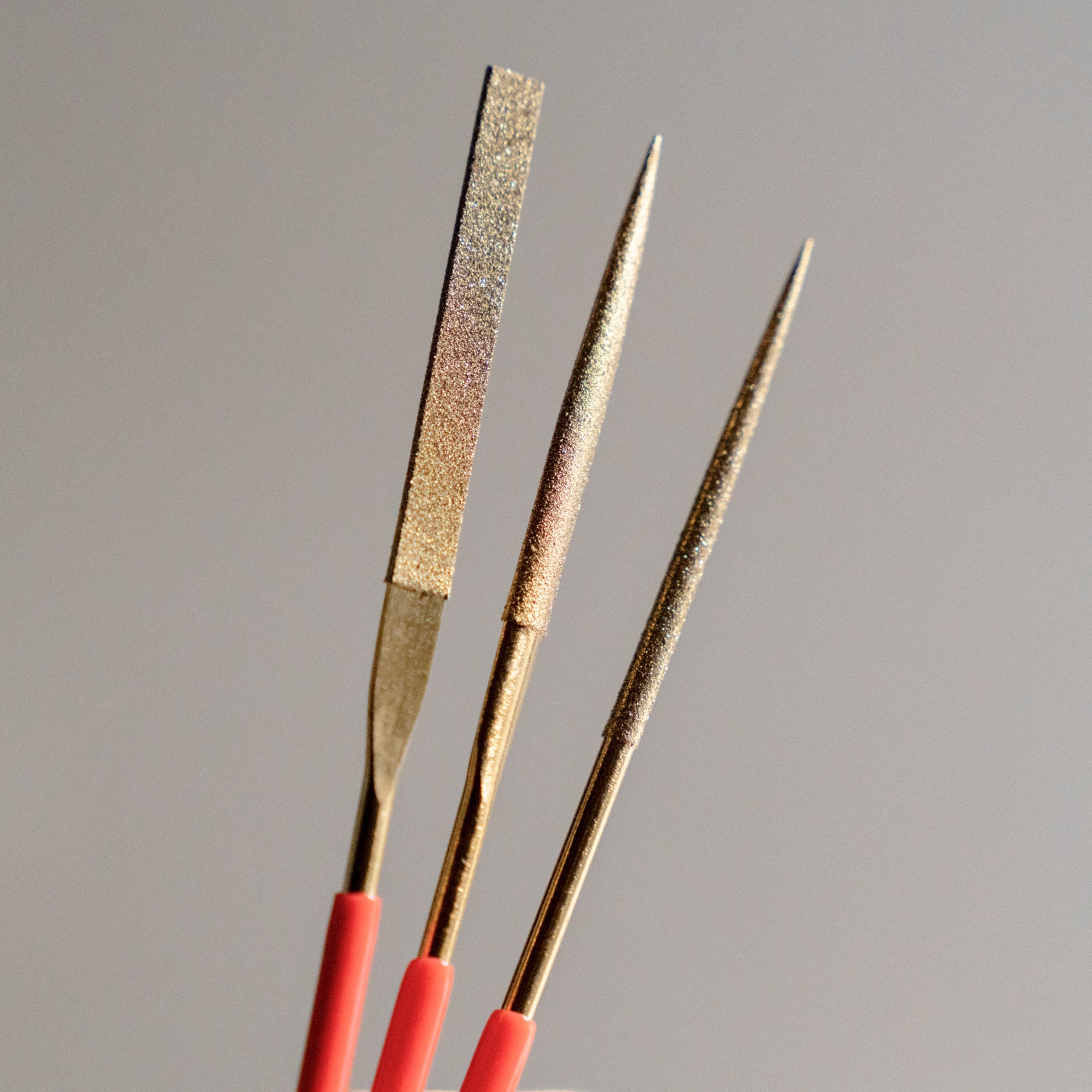STEP 1: Choose your kit
Get started by repairing chipped or broken wares with our starter Kit. If you're ready to move on to filling in missing fragments and other challenges, we recommend the advanced Kit.
STEP 2: Choose your class
We recommend starting with our chipped class and for those whith experience the broken and missing fragment class. For those that prefer offline learning, we also offer our printed leaflets.
Additional materials
For our experienced Kintsugi restorers we offer additional materials and tools that will help deepen your skill and understanding of the craft.
STEP 3: Learn with our blog
We regularly publish articles on our blog that will help you gain deeper insight into the Kintsugi repair technique, its cultural background and much more.
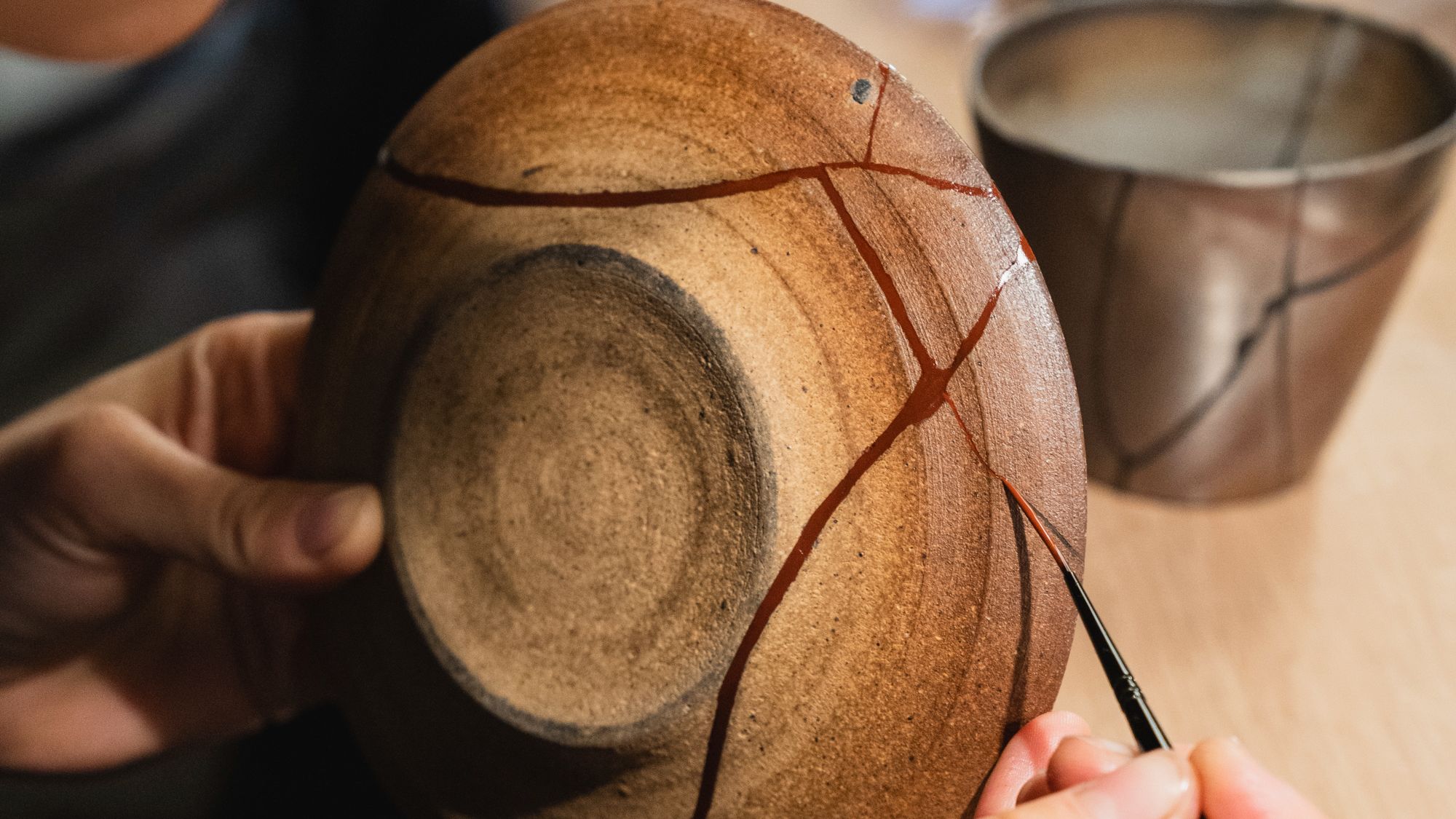
How to mend breaks: red and black urushi (part 3 of 3)
Once mugi urushi has been used to glue the broken fragments together, and sabi urushi has been used to fill the nooks and crevasses, phase 3 of the repair process is applying red and black urushi t...
Read more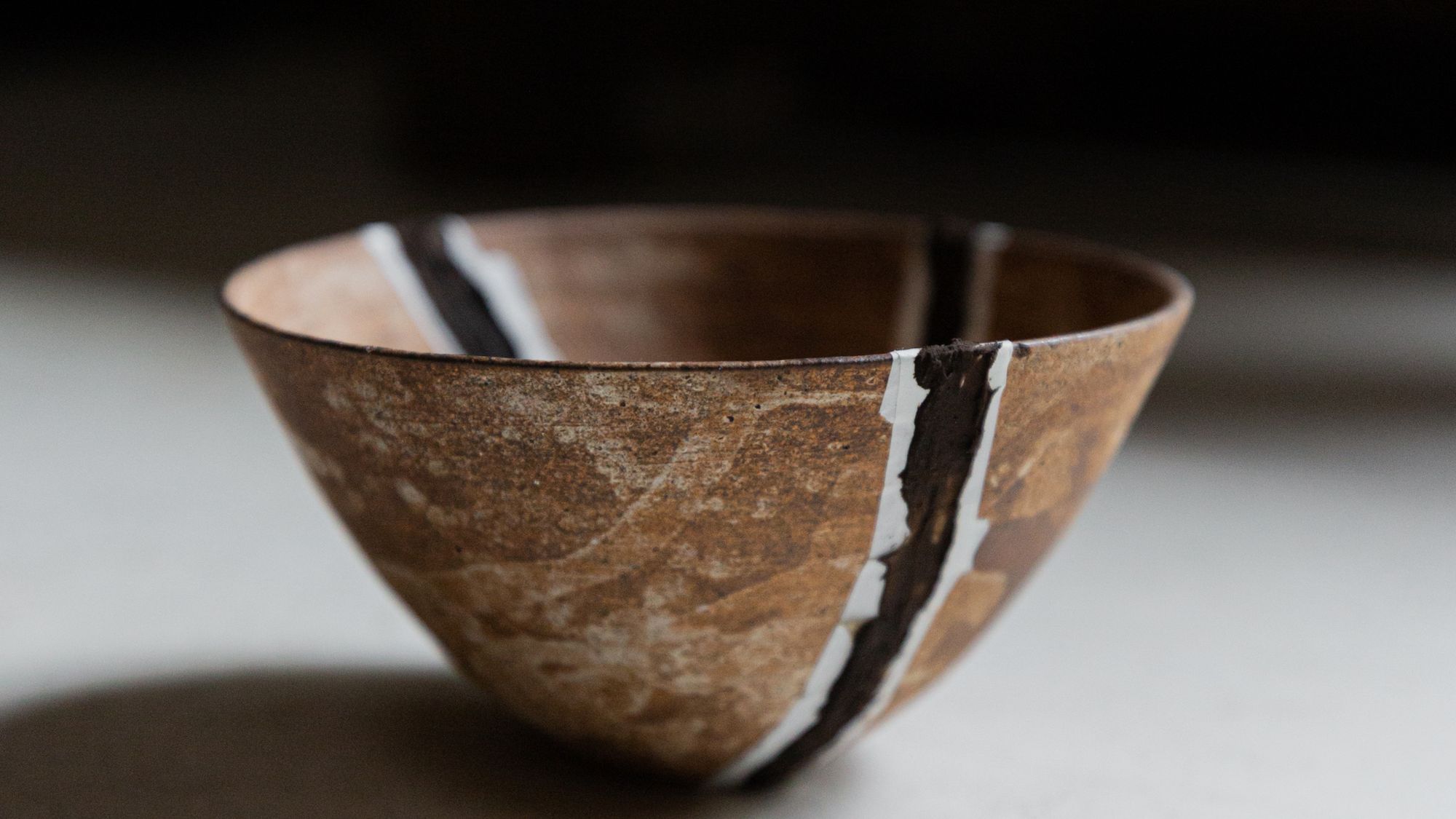
How to mend breaks: sabi urushi (part 2 of 3)
Once mugi urushi has been used to ‘’glue’’ broken fragments together, part 2 of the repair process is making and applying sabi urushi.
Read more
How to mend breaks: mugi urushi (part 1 of 3)
When beginning kintsugi-repair, the first question to ask is, ‘‘how is the piece damaged?’’ Is it broken, cracked, or chipped? First and foremost, accurately identifying the fractures is an art in...
Read more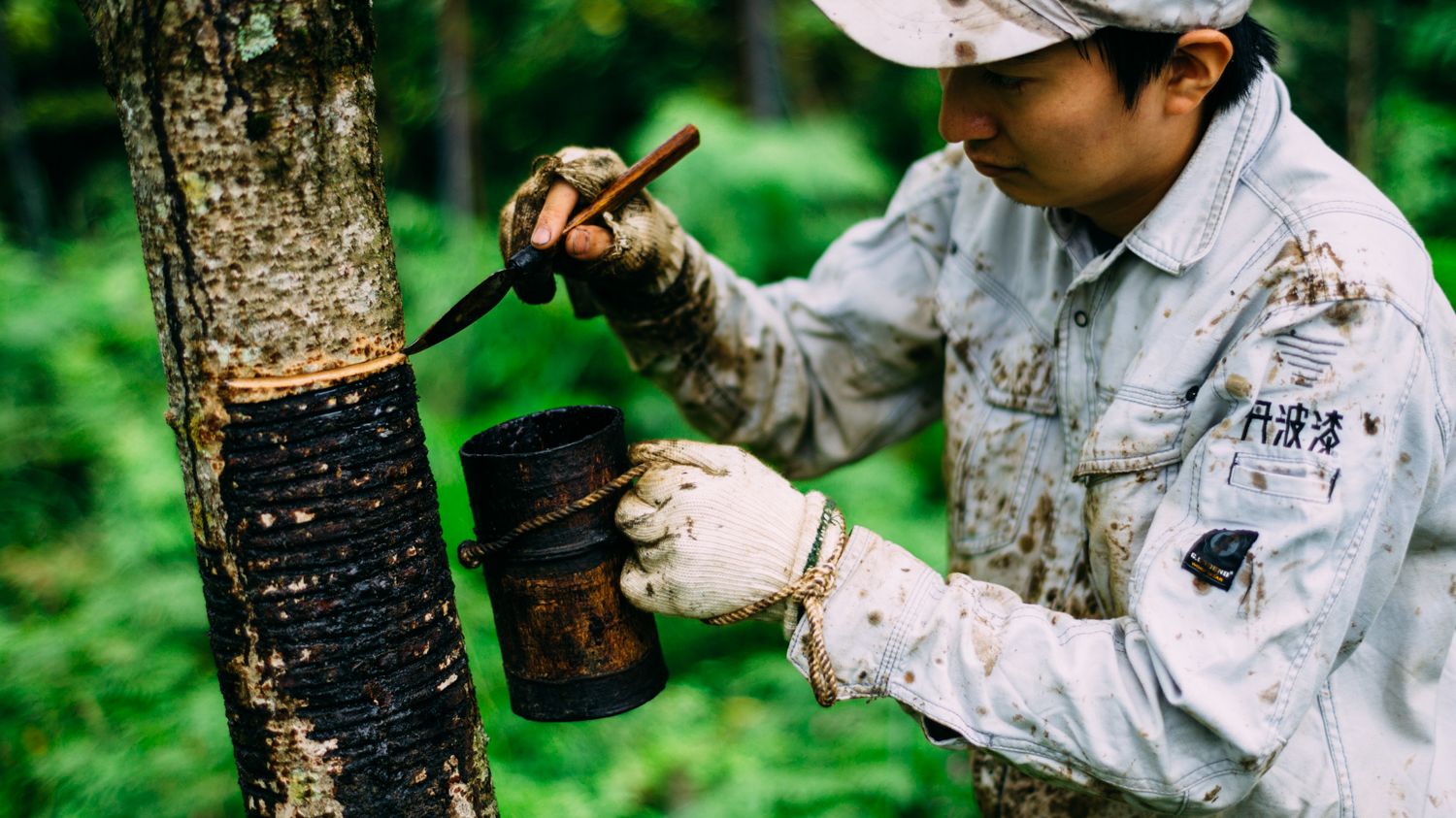
Kintsugi-repair restores broken pieces with urushi tree sap, and often finishes the repair in gold or silver powder. As a restoration practice, pieces repaired with hon-kintsugi are aesthetic, food...
Read more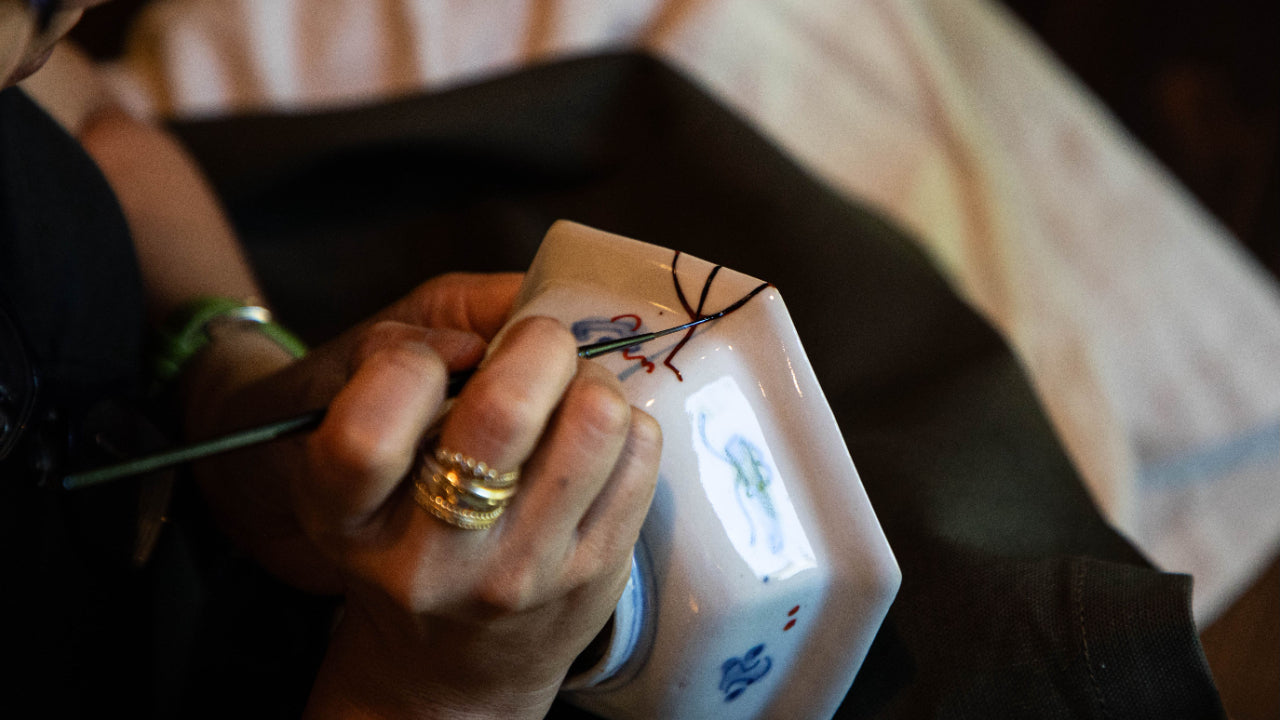
Kintsugi Apprentice Stories: Summer 2023
In Summer 2023, we welcomed our inaugural class to Kyoto for the first ever Kintsugi Apprentice Program.
Read moreKintsugi FAQ
The authentic kintsugi method we promote at POJ Studio is fully food safe. All materials we use, includingurushilacquer and 24K gold, are fully food safe. For our professional repair requests, we also offer the option to finish the repair in silver, brass, tin, black, or red. Gold, silver, black, and red, are food safe, however we suggest using brass and tin for non-tableware items such as vases.
Are kintsugi-repaired wares microwave and dishwasher safe?
Please avoid the dishwasher and harsh detergents, and instead hand wash with soap and a soft sponge. Authentic urushi lacquer and 24K gold are ideal natural materials for tableware repair because they are perfectly food-safe and very durable. Soups and beverages are no problem at all for repaired wares. We suggest that repaired ware are not submerged in water for long periods of time to avoid water pressure from all sides. Over time, this could loosen the bind, but if done right, there should never be a problem. There have been urushi wares found from excavation sites dating as far back as 9000 years ago.
Should you experience alarming inflammation from touching urushi, or from simply being in the presence of urushi, please remove yourself from the room and consult a doctor for immediate medical attention. For most people, touching urushi will cause minor irritation and itchy skin that can last up to three weeks. Proper handling like wearing gloves and a long-sleeve shirt help to prevent accidental contact with urushi. POJ Studio is not liable for any adverse reactions caused by urushi. If you accidentally touch urushi, massage the affected area well with any plant-based oil straight away, like you would when removing make-up, and thoroughly wash with soap thereafter.
Urushi is sap derived from the urushi tree and used as is, where as cashew nutshell resin is derived from the shell of the cashew nut and needs to be quite processed to achieve a state that resembles the function of lacquer. Therefore, depending on how the cashew nutshell resin was distilled and treated, there may be compounds used that are not fully food safe. This you will need to confirm with the maker directly. Cashew nutshell resin contains more water and rubber than urushi, which means that the kintsugi repaired ware may not end up being as durable.
Shinurushi is a product name used by some makers. Unfortunately, it is often quite unclear as to the exact ingredients and manufacturing process, but these are mostly marketed to use in the making of fishing tools and states on the packaging that it should not be used for tableware.
Gold, silver and brass powder, Kiurushi, Eurushi, Tonoko, Mawata and Diamond files can be purchased on this page above.
Our recommended “best before” date is one year for kiurushi as it is a raw material. Mixed urushi like eurushi, kuroroiro, and kuro urushi, can be used so long as it has not hardened. We recommend proper storage of all urushi to extend its lifespan for as long as possible, as it is a precious natural resource.
After each use, screw the cap tightly and store urushi in a cool, dry, and dark place to ensure its longevity. In hotter or more humid months, we suggest wrapping urushi tubes in newspaper or placing in a plastic bag, and storing in the refrigerator, while ensuring there is no direct contact with other objects.
The duration of the repair process varies depending on your climate, and the extent and type of the damage of your ware. However, you should expect it to take approximately 6 - 10 weeks + 4 weeks of aging.
A muro, or room, is a cellar that meets specific climate conditions: temperature at 20 - 28°C / 68 - 82°F, with a humidity level of 65 - 80%. Urushi requires these conditions to harden. Temperature and humidity that is too high can cause urushi to shrivel or harden only on the surface. Temperature and humidity that is too low can cause the urushi to dribble or take a very long time to harden. Traditionally, wood cellars are used, however we suggest making a simple muro using a cardboard box. Cardboard boxes effectively mimic wood's ability to simultaneously breathe and insulate. Lay plastic wrap or a silicone baking sheet at the bottom of the box and then wring out a wet dish or tea towel and place it on top. When placing wares into your muro, take precautions to ensure that wet urushi does not touch any surface. If the wares need to be raised, wooden chopsticks or popsicle/craft sticks tend to do the trick. With the latter, multiple sticks can be stacked to create the height you need. Masking tape can be used to hold the sticks in place.
Kiurushi absolutely works on glass. However, the repaired ware will remain extremely fragile as glass (just like the glaze on ceramic ware) does not absorb urushi. There are a couple more notes to keep in mind. Glass will very much highlight the inner breakage as the urushi hardens and becomes a very dark color. Metal finish like gold will not adhere well due to the fact that urushi does not absorb into the glass, so the finish may slip off easily, even after the three month maturation process. There are indeed urushi products geared toward glass repair, however they include a bit of synthetic resin to make the bond more durable, which is why we cannot recommend it as a 100% food safe solution.
Our recommended “best before” date is one year for kiurushi as it is a raw material. Mixed urushi like eurushi, kuroroiro, and kuro urushi, can be used so long as it has not hardened. We recommend proper storage of all urushi to extend its lifespan for as long as possible, as it is a precious natural resource.
Our recommended “best before” date is one year for kiurushi as it is a raw material. Mixed urushi like eurushi, kuroroiro, and kuro urushi, can be used so long as it has not hardened. We recommend proper storage of all urushi to extend its lifespan for as long as possible, as it is a precious natural resource.
After each use, screw the cap tightly and store urushi in a cool, dry, and dark place to ensure its longevity. In hotter or more humid months, we suggest wrapping urushi tubes in newspaper or placing in a plastic bag, and storing in the refrigerator, while ensuring there is no direct contact with other objects.
If turpentine is not readily available in your part of the world, kerosene, benzene, and camphor may be suitable alternatives. As with turpentine, please use any of these products with caution (away from any flames) and secure lids tightly after each use.


